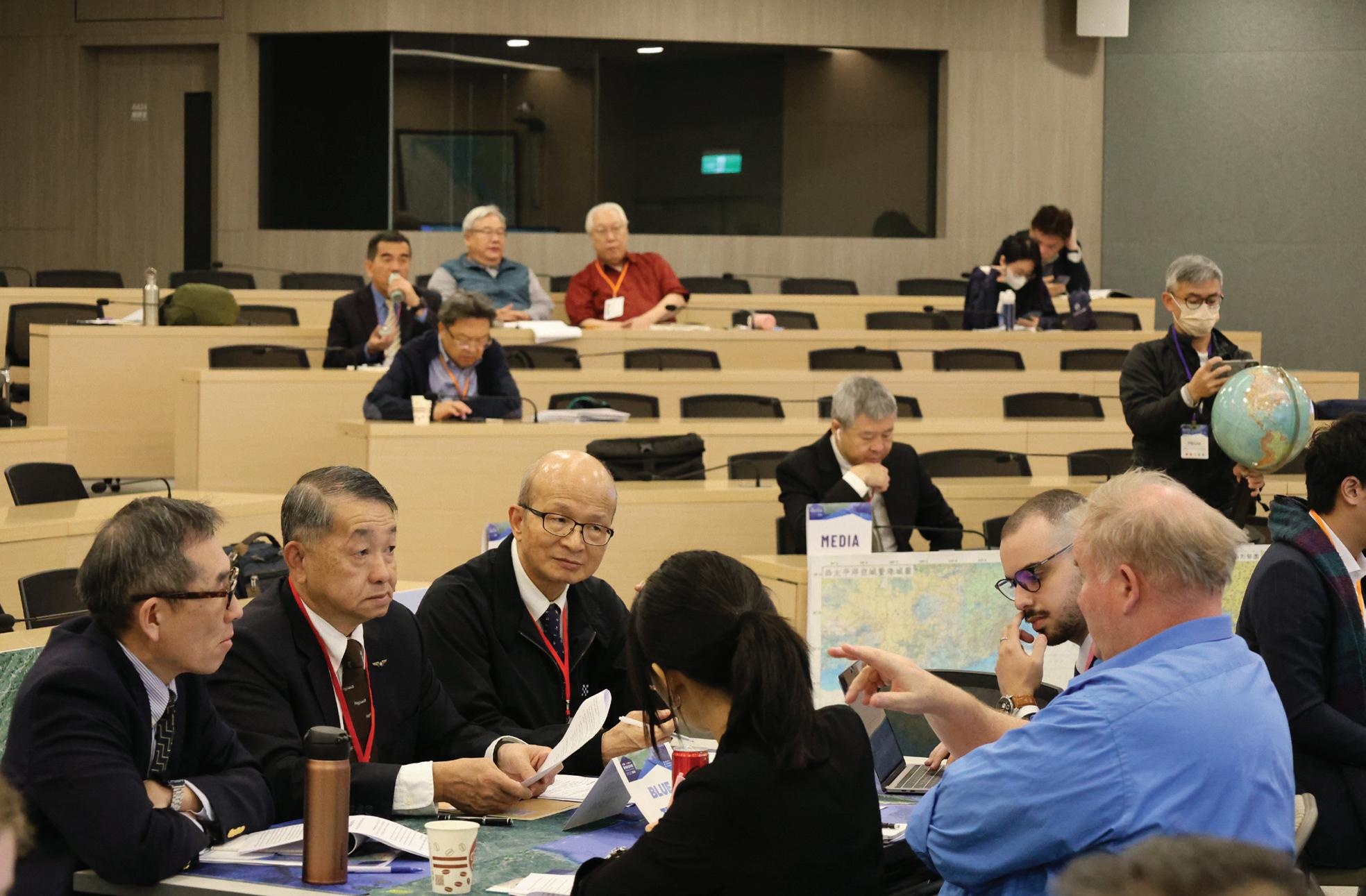

Strengthening Societal Resilience to Meet Unlikely Conflict in
the Taiwan Strait
Co-editors:
Admiral Richard Y. K. Chen and Professor Fu-Kuo Liu


Executive Summary
Overview:
The 2025 Tabletop Exercise (TTX), conducted from March 3rd to 5th and hosted by the Taiwan Center for Security Studies in collaboration with the Institute of International Research, simulated a comprehensive, multi-domain response to escalating hostilities from the People’s Republic of China (PRC). The exercise brought together a diverse cohort of domestic and international experts from the defense, economic, healthcare, energy, legal, and technological sectors to assess Taiwan’s vulnerabilities, stress-test crisis response capabilities, and produce actionable recommendations under a forwardlooking geopolitical framework.
Scenarios and Key Findings:
1. Regional Security & Taiwan Strait Crisis: The PRC’s use of joint military exercises, legal warfare, and psychological operations to Taiwan’s C4ISR systems, promoting international legal norms, and enhancing joint military exercises with allies.
2.
A simulated PRC-imposed blockade illustrated how China might leverage ambiguity and humanitarian optics to isolate Taiwan diplomatically. Taiwan’s response must in-dination with ASEAN, India, and like-minded partners.
3. Societal Resilience (Cybersecurity and Healthcare):
An analysis of the TTX proceedings revealed critical vulnerabilities in Taiwan’s centralized telecom, power, and healthcare systems. Participants emphasized decentralizing medical hubs, expanding satellite communication capabilities, upgrading cyber regulation for wartime readiness, and formally supporting grassroots civil defense and medical training initiatives.
4. Industrial Resilience & Semiconductor Security:
Amid shifting U.S. industrial policy and growing Chinese competition, Taiwan riskstions included proactive state involvement in industrial diplomacy, implementation of the Foundry 2.0 innovation model, and resolution of energy and talent shortages.
5. Economic Stability & Financial Infrastructure: disruption, and overreliance on Chinese trade. Proposals included forming a Financial
Crisis Task Force, establishing a dual-currency settlement mechanism, enhancing sov-
6. Energy Security & Infrastructure Stability:
Taiwan’s ongoing nuclear phase-out, inadequate LNG capacity, and minimal power reserves pose a direct threat to national resilience. Recommendations included reassessing nuclear policy, investing in Small Modular Reactors (SMRs), improving storage and redundancy, and securing maritime energy supply routes.
Strategic Recommendations:energy, industry, and civil society.
law, crisis powers, and continuity of democratic institutions.national advocacy as core deterrent tools to counter PRC cognitive warfare.ing silent cooperation with ASEAN, India, and European democracies.
high-tech sector independence through infrastructure investment and talent development.
Conclusion:
The 2025 TTX validated the urgent need for Taiwan to modernize its national security planning for a new era of hybrid threats. The PRC’s strategy is no longer one of immediate invasion, but of sustained attrition—leveraging legal ambiguity, coercive diplomacy, and infrastructure sabotage. Taiwan must therefore t reat its defense as an cross-sector coordination.
not enough to build deterrence through military force; Taiwan must prepare to defend its autonomy by aligning its economic, political, technological, and civic assets toward a common purpose: survival with sovereignty.
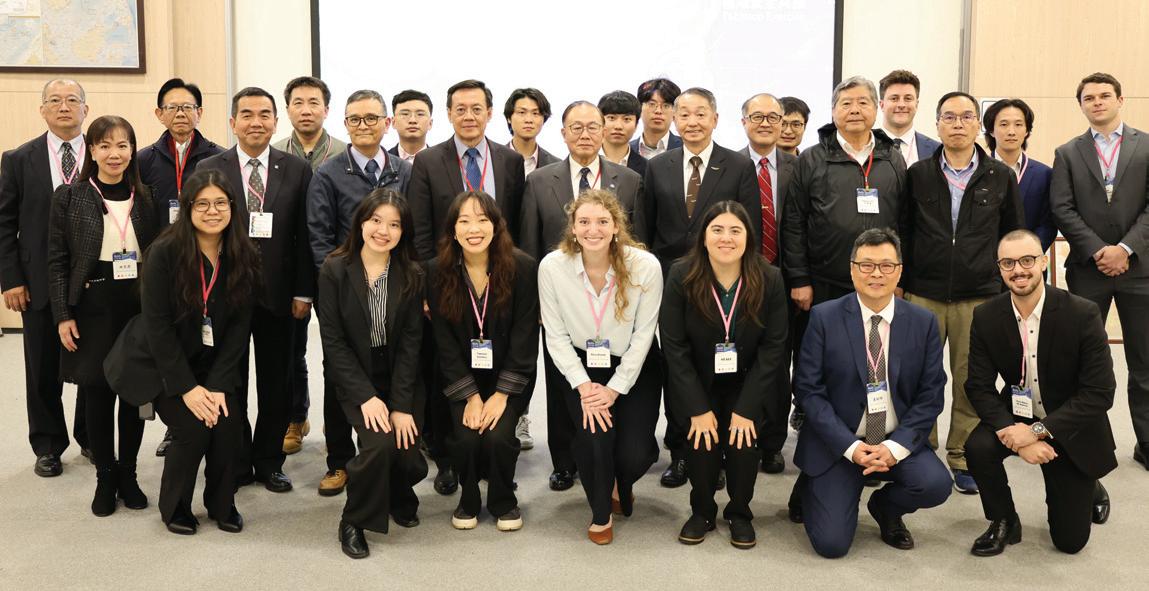



About Us
The Taiwan Center for Security Studies (TCSS) is Taiwan’sganization dedicated to understanding Taiwan’s multifaceted security challenges.
Our mission is to promote a framework for peace and collaboration through open dialogue and the exchange of perspectives not only within the the globe. We aim to provide comprehensive in-depth research within our areas of expertise, such as policy recommendations towards CrossStrait Relations, as well as nontraditional security challenges that Taiwan currently faces. Many crucial areas within Taiwan’s security interests must be addressed, such as civil defense, military intelligence, information communication technology security, as well as energy resilience, semiconductor manufacturing, and maritime governance. TCSS hopes to facilitate insightful events and discussions to inform decisionacademics, business leaders, and the general public in order to help Taiwan navigate its turbulent and uncertain future.
Gratitude and Recognition: Honoring Contributors and Partners for their Invaluable Support and Dedication to Our Endeavors
We would like to extend our gratitude to our esteemed contributors and partners who, through their efforts and collabo-wards the success of our endeavors.
Furthermore, we have utmost appreciation for the participation and attendance of numerous international experts, gov-
tise to enriching this Table Top Exercise. Their active engagement and inquiries breadth of our discussions.
Moving forward, we anticipate the continued support and collaboration with the Institute of International Relationsganize events centered around interand other pressing global issues aligned with the mission of the Taiwan Center for to fostering meaningful dialogues and advancing knowledge within these critical areas.

All text and photos © 2025 by the Taiwan Center for Security Studies. All rights reserved.
Meet The Team
Admiral ROCN (Ret.) Yeong-Kang (Richard) CHEN, Senior Advisor, Taiwan Center for Security Studies
Professor Fu-Kuo LIU, Director, Taiwan Center for Security Studies
Rear Admiral ROCN (Ret.) Nien-Hsi (Hope) YUAN,search Association
Major General ROCA (Ret.) Yi-Cheng YU, Consultant, Taiwan Center for Security Studies
Rear Admiral ROCN (Ret.) Kuang-Ya (Marty) HSIA, Advisor, Taiwan Center for Security Studies
Captain ROCN (Ret.) Pei-Yung AN, Advisor, Taiwan Center for Security Studies
Colonel ROCAF (Ret.) Ming-Huei LU, Advisor, Taiwan Center for Security Studies
Captain ROCN (Ret.) Kei-Young HOU, Advisor, Taiwan Center for Security Studies
Captain ROCN (Ret.) Ji-Jen WU, Advisor, Taiwan Center for Security Studies
Colonel ROCA (Ret.) Menge-Harn LEE, Advisor, Taiwan Center for Security Studies
Hsiao-Chun TAI, Secretary General,
Shan-Cheng LEE, Advisor, Taiwan Center for Security Studies
Cheng-Yun CHANG, Advisor, Taiwan Center for Security Studies
Tien-Hsiang HSU, Advisor, Taiwan Center for Security Studies
Chi-Feng HUANG, Advisor, Taiwan Center for Security Studies
Wei-An Lin, Advisor, Taiwan Center for Security Studies
EXERCISE TEAM LEADERS
William A. STANTON, Former Director, AIT (US)
LG Mike TIEN, Lieutenant General, ROCAF (RET.)
Arthur HONG, Adjunct Professor, National Defense University
Amb. Franz JESSEN, Former EU Ambassador to Vietnam and the Philippines
Toshitaka TAKEUCHI, Professor, Kyoto University of Foreign Studies
PM HEBLIKAR,
Tze-Chen TU, Professor, Chung Hua University
Chi Yu, Ex. ASML VP
Shin-Horng Chen, Vice President of CIER
Sean CHEN, Chairman, APPACUS Foundation / Former Premier of the Executive Yuan
Chi-Yuan Liang, Chair Professor, National Central University
KEY ADVISORS
Paul WANG, Chairman of K.T. Li Foundation for Development of Science and Technology, ITRI Laureate
Chung-Ming KUAN, Academician of Academia Sinica, Former President of National Taiwan University
Jennifer L. WANG, Professor of National Chengchi University, Former Chairperson of the Financial Supervisory Commission
William A. STANTON, Former Director, American Institute in Taiwan (AIT) / Visiting Professor at National Chengchi University
Su-Po KAO, Vice Chairman of the 21st Century Foundation
Wendell LEE, General Manager, Fiberlogic Communications, Inc.
Analysis
This outline synthesizes the discussions and strategic responses from a multi-scenario 2025 tabletop exercise that focused on Taiwan’s security, economic, and societal resilience amid escalating cross-strait tensions and global geopolitical shifts. The exercise, structured across six thematic scenarios, involved numerous international experts, govpolicy recommendations for strengthening national security and societal resilience by politics, economics, military, diplomacy, energy, industry, technology, healthcare, and societal resilience.
The exercise aimed to better understand and manage the risks posed by potential security threats in the region, particularly in relation to Taiwan’s security. Participants worked through realistic scenarios to assess responses to potential military, political, and diplomatic crises, with the goal of strengthening Taiwan’s preparedness, enhancing cross-sector cooperation, and identifying gaps in existing policies. The exercise the region and explored how past U.S. policies might shape current and future security dynamics.

The tabletop exercise covered the following thematic scenarios:
Regional Security & the Taiwan Strait Crisis
This scenario involved the People’s Republic of China (PRC) escalating gray-zone activities in the Taiwan Strait, including joint military drills with Russia, increased mariChina” narrative and deterring external involvement. The People’s Liberation Army (PLA) conducted large-scale military exercises encircling Taiwan and missile tests to impose de factoed States and China deploying aircraft carrier strike groups nearby, drone crashes at
gradually normalize PRC activity in contested areas. Civil-military fusion tools, such as the maritime militia and integration-focused incentives targeting places like Kinmen, are also deployed to blur the line between military and civilian domains.
of deterrence and de-escalation. Proposed responses included en hanced C4ISR coordination, the promotion of regional legal norms to counter PRC narratives, and more frequent joint military exercises. Taiwan, under mounting pressure, would likely continue
Other regional actors reacted more cautiously. India expressed concern about coercive tactics and signaled potential alignment with like-minded partners. ASEAN states, by contrast, largely prioritized regional stability and refrained from direct confrontation, underscoring the limits of collective regional responses.
This scenario illustrates how sustained PRC pressure in the Taiwan Strait could provoke a spectrum of responses, from strengthened coordination among key democracies to calibrated neutrality among regional stakeholders.
Geopolitics & Grey Zones
imposes a 30-day blockade around Taiwan while preparing militarily. This action dis-
sula and in the South China Sea. The scenario considered the implications of a multi-
national military exercise in the South China Sea and the potential U.S. deployment of medium-range missile systems in the Philippines. Key questions included how the PLA would enforce the blockade, particularly regarding international evacuations, and whether it would permit or engage foreign military intervention. The blockade was
Red Team’s assessments suggest that China’s imposition of the blockade is a strategic move designed to coerce Taiwan into political concessions without triggering a fullstrategy, leveraging economic, diplomatic, and military pressure to weaken Taiwan’s position in the international arena. The blockade is seen as a gray-zone tactic, avoiding outright military confrontation while undermining Taiwan’s stability and increasing itstating foreign evacuations and framing the blockade as a lawful action—China seeks to avoid direct international intervention, focusing instead on controlling the narrative and reinforcing its claims over Taiwan.terrence and de-escalation. Proposed actions include deploying military assets to the region, enhancing intelligence-sharing, and engaging in joint military exercises to demonstrate solidarity and counter China’s actions. Taiwan, under immense pressure, would likely focus on strengthening its self-defense capabilities while working to internationalize the issue further, rallying support from other nations to counter China’s blockade.
Other regional actors are expected to react with caution. South Korea, while concerned about the broader regional stability, may adopt a neutral stance, focusing on internal security and economic concerns. ASEAN states, on the other hand, would likely prioritize diplomatic engagement and stability in the region, avoiding direct confrontation with China but urging for a peaceful resolution to the crisis. This scenario illustrates how China’s use of a blockade in the Taiwan Strait could powers to cautious neutrality from regional actors, highlighting the complexity of managing the crisis in a highly sensitive geopolitical environment.
Societal Resilience
tions services supported by transportation and power infrastructure. The second addressed Combat Casualty Care Capacity and Resilience focusing on the healthcare system’s ability to function during crises.
1. Homeland Security Policy
Experts highlighted the importance of protecting critical sectors for national securityof these sectors plays a pivotal role in maintaining national stability during crises, with particular emphasis on ensuring continuity in leadership, secure communication channels, and the functioning of essential infrastructure. The vulnerability of Taiwan’s infrastructure was discussed, such as its reliance on international submarine cables and centralized power and telecom networks. There is a need for a comprehensive national security plan that integrates international best practices and adapts to both peacetime and wartime threats. The seminar also touched on the role of Taiwan’s Ministry of Digneed for a more robust legal framework to address emerging cyber and physical threats.
2. Healthcare System Resilience
The second scenario focused on the role of healthcare resilience in maintaining national stability, particularly during times of crisis. Taiwan’s healthcare system’s vulnerabilities were thoroughly discussed, including its heavy reliance on imported medical supplies and the concentration of hospitals in metropolitan areas. In the event of an
emphasized strategies to enhance resilience, such as decentralizing medical hubs and improving logistical networks. Additionally, it addressed the importance of ensuring that telecommunications remain operational for emergency coordination. The seminar also explored Taiwan’s current gaps in preparedness, particularly in relation to biowarfare, and the need for stronger government support for grassroots initiatives in medical training and self-defense. It was concluded by stressing the importance of preparing Taiwan’s healthcare system for a wide range of disruptions, including power and water shortages, which could severely impact medical operations.
Industrial Resilience
This scenario assessed the industrial implications of a potential Trump administration, focusing on the impact of protectionist policies on Taiwan’s industries, particularly the semiconductor sector. Scenarios explored how Taiwan’s trade, technology, and semiof U.S. economic decoupling or technological containment on Taiwan’s industries. Discussions also covered potential countermeasures for Taiwan, strategic planning for resilience, and the future of Taiwan’s semiconductor manufactur ing amid global shifts.
chain rerouting becomes the norm rather than resolving core dependencies. Despite TSMC’s US$100 billion investment, it was noted that Taiwan missed a strategic opportunity by not engaging directly in negotiations. This raised key questions about whether Taiwan sees TSMC as a national asset to leverage—or merely a pawn on the geopolitical chessboard.
Team players emphasized the semiconductor industry’s deeply interdependent structure, from IC design and wafer production to packaging and advanced fabrication. No single country can dominate chip production alone, making Taiwan’s leadership vital yet exposed to external constraints. China’s export controls and U.S. extraterritorial measures create mounting pressures on Taiwan’s tech ecosystem, while TSMC’s relo-
innovation ecosystem (Foundry 2.0), with the Chip-based Industr ial Innovation (CbI) Strategy (2024–2033) providing a path forward. The team stressed the need to stay competitive through high-end fabrication, strategic partnerships, and proactive policy planning. Talent shortages—especially in the U.S.—further complicate any reshoring narrative.
age in shaping its industrial future. Ultimately, Taiwan’s semiconductor leadership cannot rely on market forces alone. Inthe ability to turn geopolitical risks into strategic opportunities.
Economic Stability, Financial Resilience, and National Security Strategy
The scenario for this situation was set against the backdrop of potential global economic turmoil and depression under a Trump administration, severely impacting Taiwan’s economy and industrial base. It highlighted Taiwan and the Taiwan Strait’s critical geopolitical position. Amidst continued cross-strait gray zone tactics and military pressure
transparent, and adaptable multi-layered national security framework in response to great power competition and global changes. Discussions covered strategic framing, enhancing societal resilience and economic self-reliance (including energy and food
cies, legal frameworks for emergency governance, and social cohesion.
1. Strategic Framing and the Broader Geoeconomic Landscape
The session was opened with a comprehensive overview highlighting the interconEconomic competition and the power imbalances between the United States and China were highlighted as the strongest predictors of geopolitical actions and posited thatabilities and dependencies.
2. Enhancing Societal Resilience and Economic Self-Reliance
Recommendations were made to aid in the strengthening of Taiwan’s societal resilience against potential geopolitical disruptions, including building energy reserves, stockpiling critical materials, establishing emergency distribution systems, and developing contingency plans for infrastructure failures. They further emphasized reducing Taiwan’s overreliance on Chinese supply chains through domestic production enhancement and increased cooperation with Southeast Asia and the United States while highlighting currency depreciation and stock market volatility as key economic concerns.
ing mainland intelligence gathering, and enhancing public communication to maintain social stability during crises.
3. Financial Infrastructure and Crisis Management -
Crisis Task Force and Financial Cyber Emergency Response Team while outlining a two-tiered approach: short-term measures, including central ban k interventions, emergency liquidity provision, and foreign exchange controls; and long-term strategies focusing on banking resilience, corporate debt management, and developing alternative payment infrastructures, especially for those relying on satellite communication. They also recommended implementing a dual-currency settlement mechanism and deepennations.
4. Systems Thinking in National Security Strategy
A conceptual framework for national security was presented, enabling horizontal integration across agencies while emphasizing sustainability to prevent chaos. Submarine as critical elements during a crisis. It was further stressed that all national securitytional governance.
5. Legal Infrastructure and Government Legitimacy
Legal scholars emphasized Taiwan’s lack of a clear legal framework for emergency governance. Public distrust—rooted in past authoritarian rule—could undermine the legitimacy of crisis responses. To maintain order and credibility, Taiwan must clarify chains of command and legal procedures, especially when civil norms are temporarily suspended. Drawing from past emergency drills, he stressed that institutional unpreparedness remains a key weakness.
6. Social Cohesion and Strategic Messaging
Conscription was emphasized as a means to strengthen civic unit y and national identity. Taiwan was to reduce economic reliance on China and project itself as a resilient democracy. Education was highlighted as a strategic asset, with calls for greater investment in Taiwan’s youth and universities to secure long-term resilience.
7. Strategic Integration and Next Steps
geopolitical and economic disruptions under a Trump 2.0 administration. Integrating defense, economic, legal, and diplomatic policies is essential to move beyond ad hoc responses and build long-term resilience.
Energy Stability
This scenario delineated Taiwan’s increasingly precarious energ y situation due to thecient renewable capacity, threatening the power grid’s stabilit y. Critical data indicated a severe projected electricity shortage in summer 2025, making power rationing likely and endangering Taiwan’s manufacturing sector. Taiwan’s reliance on imported oil and
disruptions, especially under escalating tensions in the Taiwan Strait. The scenario also considered how national security protocols, including emergency energy strategies, should be implemented if Taiwan’s energy supply faces direct military threats, such as a Chinese strategic blockade aimed at economic strangulation. Discussions focused on data-driven energy policies, ensuring stable energy for industry (especially high-tech), and maintaining maritime supply lines under blockade. The potential role of reactivating or extending nuclear power plant lifespans was also considered as a means to mitigate energy shortages.
Participants emphasized that Taiwan’s rapid denuclearization has outpaced its renewable capacity buildout, leading to an overreliance on imported natural gas and oil with minimal strategic reserves. These factors make the island highly vulnerable to supply shocks, especially under cross-strait tensions. Nuclear power, previously accounting for 11% of Taiwan’s energy mix, was seen as a potential stabilizer if reactivated or extended.
Short-term measures to strengthen Taiwan’s energy security include improving the electricity storage system, expanding the mix of energy sources, and increasing invest-able long-term solution due to supply risks and high emissions. Looking ahead, technologies such as Small Modular Reactors (SMRs), Vehicle-to-Grid (V2G) systems, and is still constrained by regulatory delays, infrastructure challenges, and high implementation costs.
TTX called for clearer nuclear policies to prevent delays in decisions regarding plant extensions. The third nuclear plant, in particular, faces an urgent need for dry fuel storage to ensure continued safe operation. As critical infrastruct ure—including military and defense facilities—relies on a stable power supply, timely and decisive action is essential to avoid future energy disruptions.
Ultimately, the move underscored the need for Taiwan to balance decarbonization with the most viable option to meet Taiwan’s energy needs by 2029, ensuring both power stability and strategic resilience.
Conclusion
business leaders, and the general public to help Taiwan navigate its turbulent future.
Adaptable.
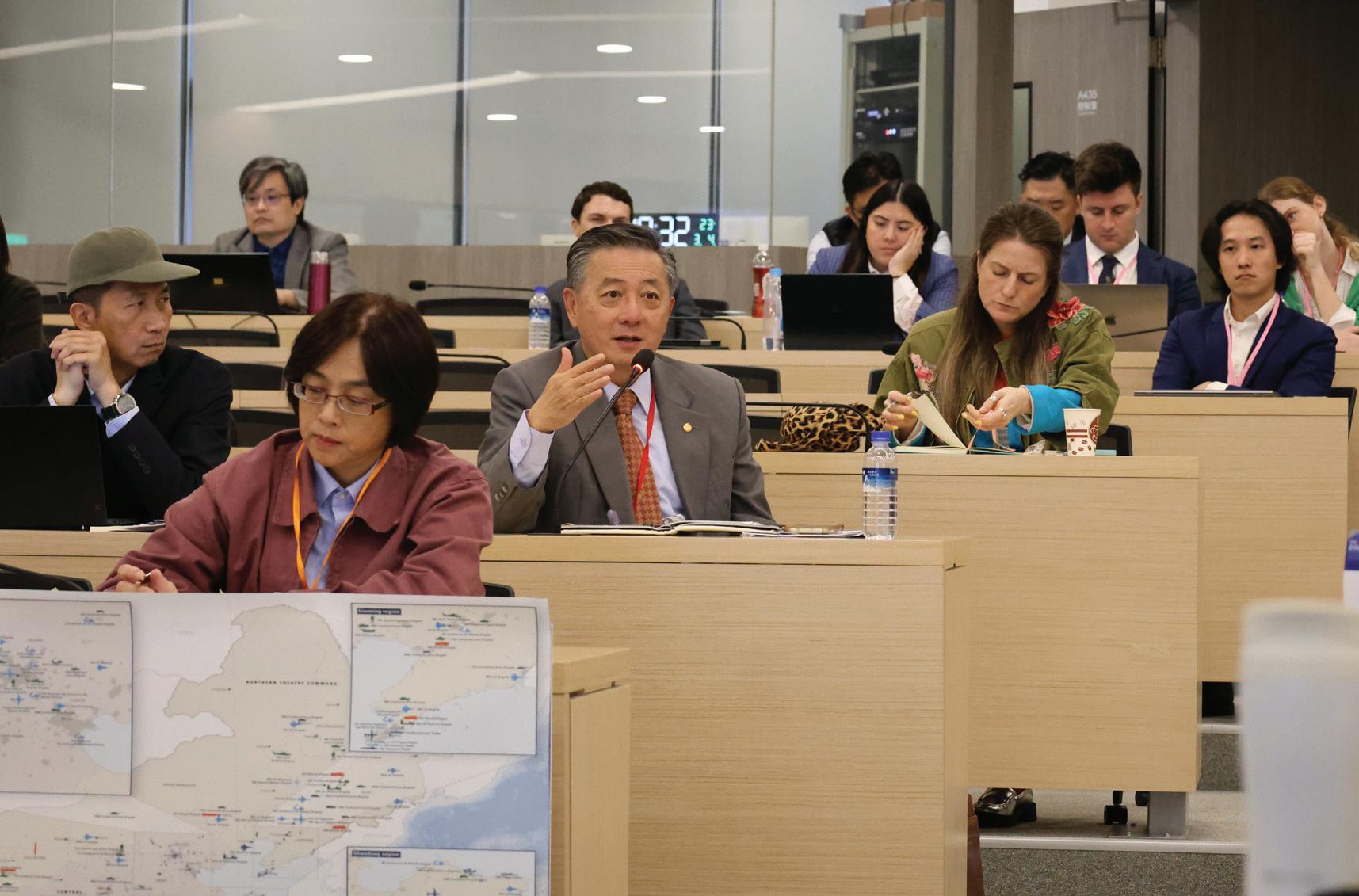

I. Preface
In August 2022, following U.S. Speaker of the House Nancy Pelosi’s unexpected visit to Taiwan, China launched large-scale military exercises encircling the island, not seen in the Taiwan Strait for decades. These actions marked what is now considered the fourth Taiwan Strait Crisis. Since then, heightened speculation and unpredictability have surrounded cross-strait relations, with many fearing the potential outbreak of war. In a democratic society, it is imperative that national security threats be made more transparent and accountable to the public. In this context, Taiwan urgently
Taiwan contingency.
Former Admiral Richard Y.K. Chen has long dedicated himself to strengthening Taiwan’s national security posture, whether during his service in government, his academic career, or his current role as a legislator.laborated with domestic think tanks and research institutions to organize and conduct three rounds of civilian tabletop exercises (TTX).
This year, in response to President Donald Trump’s approach to U.S. foreign policy and a rapidly evolving cross-strait situation, Admiral Chen once again teamed up with the Institute of International Relations at National Chengchi University, along with experts and scholars from various Taiwanese and overseas think tanks representatives, to plan and execute the fourth annual TTX. The Taiwan Center for Security Studies hosted the event, which took place from March 3rd to 5th, 2025.
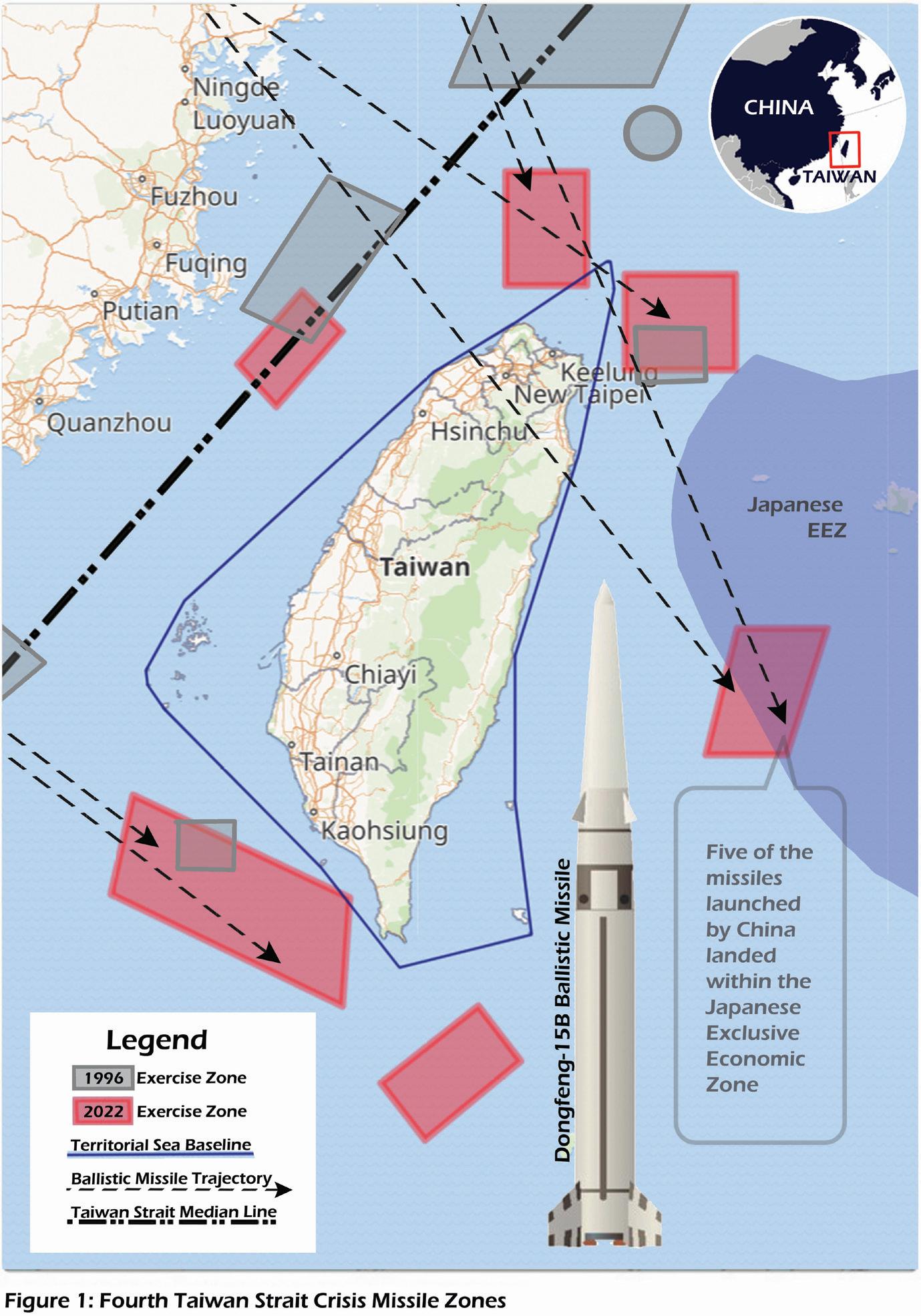
Introduction
ulate various security challenges faced by Taiwan in light of escalating tensions within the Taiwan Strait. These exercises engage with a wide range of stakeholders, such as policy-makers, strategic players, and observers, in collaborative risk management and scenario analysis.
The goal of these exercises is to better understand and manage the risks posed by potential security threats in the region, particularly in relation to Taiwan’s security. Teams work through realistic scenarios and assess responses to military, political, and diplomatic crises, with the purpose of strengthening Taiwan’s preparedness and enhancing cross-sector cooperation. These exercises alsotive crisis management.
The fourth annual TTX was held from March 3rd to 5th, 2025, and is especially timely as it focused on the critical impact of the Trump administration on the region and explored how past U.S. polithe exercise aimed to address a potential Taiwan contingency—an event or series of events that
The TTX included a variety of team players to ensure the representation of diverse perspectives and expertise. This approach aimed to provide a comprehensive and inclusive platform for simulating crisis scenarios with feedback from military, diplomatic, economic, and civil sectors. The goal of the annual TTX to prepare Taiwan’s leaders and relevant stakeholders for high-stakes decisionmaking in real-world scenarios, thus enhancing Taiwan’s resilience in a rapidly changing geopolitical landscape.
Through exercises like the TTX, Taiwan is actively working to strengthen its national security posture while fostering communication and collaboration between all concerned parties, both domestically and internationally. These exercises help to cultivate a robust understanding of future potential challenges, allowing for well-rounded solutions to emerge when the need arises.
II. Purpose & Objectives of the Tabletop Exercise
The TTX approach diverges from traditional models that focus solely on military considerations and outcomes based on victory or defeat. Instead, this approach adopts a comprehensive framework that incorporates international dynamics, geopolitics, economics, and regional security interactions.
security from multiple dimensions, including politics, economics, military, diplomacy, energy, industry, technology, healthcare, and societal resilience. The goal is to provide professional, non-partisan policy recommendations for strengthening national security and societal resilience.
or representatives. Their role was to provide professional insights and recommendations rather thantions, and means of action.
The exercise prioritizes the , Accountability, and Adaptability of the proposed recommendations to ensure they are practical rather than mere theoretical discussions. The primary aim of the TTX is to explore issues and feasible solutions rather than judge victory or defeat, right or wrong, or good or bad.


III. Scenario Design
members of the United Nations Security Council maintain diplomatic stability and no direct military
satisfaction, especially regarding the leadership’s lifelong tenure.
the Yellow Sea, East China Sea, and South China Sea. Meanwhile, the People’s Liberation Army (PLA) escalates military exercises around Taiwan, gradually increasing intimidation and coercing Taiwan into military force if necessary.
Wargame Team Structure
The 2025 wargame included a senior advisory group specializing in national security and economic designed to explore Issues 1, 2, 4, and 6. Issue 3 involved a dedicated report on cybersecurity and healthstrategy.
Team players included leading experts from Taiwan in military, political, security, economic, industrial, and technological sectors. In addition, international team players included scholars from India, Europe,
IV. Main Issues of Tabletop Exercise
Issue 1: Regional Security & the Potential Taiwan Contingency
Scenario Response:
I. Overall Commentary
As the Chinese Communist Party (CCP) continues to consolidate its comprehensive national power, itscontributed to a more cautious and conservative approach among states regarding involvement in cross-
The CCP’s strategic approach to Taiwan has evolved beyond conventional military deterrence. Through layered strategy that combines both hard and soft power. This has contributed to Taiwan’s diminishing resilience and growing passivity in shaping cross-strait dynamics.
domestically and internationally. Assertive law enforcement actions by maritime agencies, in particular, serve as both a symbolic and practical assertion of sovereignty. Simultaneously, the expansion of preferential policies aimed at Taiwan, especially towards residents of the outlying Kinmen Islands, functions as a targeted united front tactic designed to fragment local allegiances and create favorable conditions in
On the international stage, the CCP will persist in framing the Taiwan issue as an internal matter, thereby reducing the likelihood of foreign intervention. Its deliberate operations within the grey zone, coupled with an integrated use of civilian and military assets—such as maritime militia, coast guard vessels, and PLA forces—allow for a calibrated display of strength that avoids open confrontation. Military exercisroutinized instruments of deterrence, aimed both at Taiwan and neighboring states.
broader diplomatic fallout, adding a layer of strategic ambiguity to its approach. This dual-track strategy security environment.
In response, Taiwan must actively enhance its defense and deterrence posture through closer coordination with the United States and other like-minded partners. This includes the establishment of robust information-sharing mechanisms, logistical cooperation, and the institutionalization of joint military exercises. Such measures are essential not only to signal military readiness but also to bolster international support in the event of a crisis. As a strategic imperative, Taiwan should prioritize deepening defense ties and expanding multilateral security engagements as a means of countering the CCP’s growing assertiveness.
II. China’s Comprehensive Strategy and Aggressive Actions
China is adopting a strategy centered on maintaining regional peace while using gray zone tactics to
goal is to downplay Taiwan’s importance on the international stage, reduce U.S. hostility, and portray the situation as peaceful and under control to discourage foreign intervention. The aim is to keep com-
actions like requesting shipping and customs data be sent to China instead of Taiwan and using PRC Coast Guard vessels are within legal bounds and help slowly undermine Taiwan’s sovereignty.
In the broader scenario, China aligns with Russia and North Korea, using joint military exercises, missile tests, and territorial claims across regional waters to apply pressure without outright war. Despite increasing military activity—including the deployment of aircraft carriers and drone incidents between the U.S. and China—the PRC seeks to avoid escalation by not initiating a blockade or direct confrontation. Their approach is to signal peaceful intentions, portraying any aggressive response by the U.S. or its allies as unnecessary provocation. China believes this stance will prevent other nations from intervening, as they view the PRC’s behavior as aligned with a peaceful, one-China policy. III.
Taiwan prioritises heightened vigilance and situational awareness through C4ISR capabilities and enhanced Maritime Domain Awareness mechanisms. There is a clear emphasis on monitoring develop-
stance recognises China’s actions as contrary to international law and encourages stronger legal interpretations supporting Taiwan’s position. Sharing intelligence with allies is a key component, alongside ensuring that military forces remain on standby. Their approach aligns with international norms and supports a rules-based order while balancing deterrence with restraint.
includes keeping a safe distance and standing by for protection. They plan to broadcast updates to the
ence—might better deter aggression. Supporting bilateral and joint exercises with Taiwan is a prudent step, sending a signal of resolve while remaining within the boundaries of international cooperation.
IV. US Entering into Crisis Management
sharing platform aimed at enhancing transparency, countering disinformation, and reinforcing alliance unity. In response to recent PLA exercises that resulted in casualties, the U.S. is deploying naval assets
tested zones to deter further escalation. The U.S. also calls for restraint in military operations by Russia,
To bolster regional security, the U.S. plans to increase its military presence (land and naval forces) at bases in the Philippines and lead a multinational INDOPACOM exercise in the South China Sea with partners including India, ASEAN nations, the UK, and France, signaling collective opposition to PRC aggression. The U.S. further urges India to sustain arms support to Southeast Asian allies. On CrossTaiwan Relations Act, opposing coercive actions by China and pledging support for Taiwan in case of escalation. Additionally, the U.S. advocates for ICAO drone regulations and proposes a U.S.-China criblockade or grey-zone tactics against Taiwan and endorsing Taiwan’s defensive military activities.

V. Japan and Korea: Maintaining Balanced Support
rules-based international order, both countries emphasized deterrence, humanitarian aid, and regional stability, particularly in the South China Sea and Taiwan Strait. They prioritized civilian safety through coordinated evacuation plans and maintained a diplomatic stance to reduce risk to foreign nationals. In -
engage in combat operations. Still, they could allow non-lethal aid and logistical support, stressing that access to their bases does not equate to direct involvement. Throughout, they underlined coordination with allies to avoid escalation and uphold peace.
strengthen intelligence, surveillance, reconnaissance (ISR), and defense measures. South Korea’s stance in a Taiwan Strait contingency will depend on the ruling party’s orientation due to ongoing domestic political debates over China policy.
VI. ASEAN and India: Seeking for Adequate Diplomatic Solution
ASEAN and India advocates for diplomatic solutions mediated by ASEAN+3 and ASEAN+6 and India, aiming to facilitate communication between China and the United States to address rising tensions. In light of broader regional security considerations, ASEAN+India has committed to ongoing de-escalafreedom of navigation in the South China Sea.
Logistical arrangements were discussed for the evacuation of their citizens in Taiwan. This issue was were raised about the potential limitations associated with the Kaohsiung ports, which were highlighted as the sole evacuation route available.
na Policy,” and therefore suggested that Taiwan should not be at the center of negotiations. Opinions also subsequent moves concerning Taiwan, while ASEAN members prefer pursuing bilateral dialogues and threats such as drones and cybersecurity challenges, which pose risks not only to security but also to economic development. Tailored responses are needed based on national capacity and adaptability.
VII. International Moral Support
The international community expresses concern about escalating tensions and urges all parties toward de-escalation through means within international law and alliance frameworks. Nations will likely align with either the US or China or remain neutral, making UN-led condemnation of China’s military actions
Taiwan’s integration into the international information-sharing framework is indispensable. The global community recognizes that transparency and timely communication are crucial to mitigating risks in the Taiwan Strait and broader regional crises. Given the lack of direct communication channels between manage disputes.
Issue 2: Geopolitics & Grey Zones
Scenario Response:
I. Overall Commentary
strategic distance, exercise mutual restraint, and avoid direct confrontation, they remain acutely aware that instability in the Taiwan Strait directly impacts their national security as well as their economic and trade interests. In response, both powers have expressed interest in establishing third-party communication mechanisms—whether through alliances or international organizations—to manage cross-strait tensions. Nevertheless, Taiwan’s capacity to secure foreign assistance remains highly constrained.
U.S. leadership. Consequently, Taiwan’s access to foreign aid or military backing hinges on the evolving to Chinese escalation.
One potential de-escalatory measure would be the coordinated evacuation of Chinese nationals from Taiwan. This could serve as a humanitarian gesture while simultaneously reducing CCP incentives to escalate further. Taiwan’s government should take such scenarios seriously and proactively engage with other countries to strengthen coordination and contingency planning.
On the matter of sovereignty and regional disputes, there is a broad international consensus that such issues should be resolved peacefully, in accordance with international law and established norms. In light of this, Taiwan should consider developing a robust legal framework to counter the CCP’s unilateral assertion of sovereignty and maritime law enforcement in the Taiwan Strait. Legal countermeasures— and support.
In the South China Sea, member states of ASEAN, along with India, have shown a growing interest in forming strategic coalitions to counterbalance Chinese expansion. Recent developments, such as increased U.S. military assistance to the Philippines—particularly the deployment of additional mediumregional ambitions. Taiwan, in turn, should prioritize enhanced military cooperation with neighboring countries to secure broader regional support in the event of hostilities.
From a military standpoint, the CCP is likely to rely on a combination of marine police, maritime militia, and PLA naval and air assets to conduct both non-military and military forms of blockade against
anti-access strategies, supported by a growing arsenal of unmanned systems, stealth aircraft, precision strike weapons, and satellite technologies.
Given the widening military imbalance across the Taiwan Strait, the consolidation of national resourceshensive national security framework encompassing legislative measures, wartime command structures, the strategic importance of these measures and instruct all relevant ministries to initiate planning and implementation accordingly. Most countries prioritize their national interests and security and are reluctant to intervene directly in the Suggestion of alliance-based or third-party communication mechanisms via international organizations
II. PLA
The PLA frames its actions as part of a non-military, internal resolution, emphasizing that its approach remains peaceful and cooperative, aiming to integrate Taiwan economically rather than provoke confrontation. To manage international concerns, China commits to facilitating the evacuation of foreign nationals from Taiwan through designated routes in Taipei and Kaohsiung, with Kinmen and Matsu demonstrate China’s diplomatic intentions and avoid escalation.
Despite ongoing military exercises and the presence of PLA aircraft carriers and vessels in the region, drills in the South China Sea. Instead, the CCP believes international actors should respect the situation as a sovereign matter. China will maintain open airspace, support humanitarian aid to Taiwan, and peaceful stance and avoiding provocative military engagement, the PLA aims to prevent foreign intervention, contain tensions, and shape the narrative that its actions are lawful and stabilizing rather than hostile.
Other areas of concern: PLA will conduct military exercises not only around Taiwan, but also in the East and Yellow Seas, signaling a broader theater of operations. The PRC maintains diplomatic communica-liver LNG and critical materials to Taiwan under humanitarian pretenses to reduce Taiwan’s dependence on other countries. Secondary rescue line using Coast Guard patrols to ensure safety, support delivery,
III.
Taiwan
Taipei emphasizes a comprehensive national defense and diplomatic strategy to counter PLA aggres-
sion and maintain sovereignty. Central to their approach is a robust international information campaign aimed at exposing PLA actions and reinforcing Taiwan’s democratic values—drawing parallels withport and hold international press conferences. Simultaneously, Taiwan will deepen military cooperation
Domestically, Taiwan will activate martial law and mobilize both active-duty forces and military reserves for combat readiness. Coordination between the military and local police will ensure societal stability in combat zones. The government will bolster national resilience by stockpiling essential energy and food supplies, increasing naval and coast guard patrols, securing satellite communications amid undersea cable disruptions, and prioritizing bilateral escort missions for vital energy shipments. Taiwan
operations and an increased air force presence around its ADIZ. The overarching security strategy centers on maintaining sovereignty, deterring PLA aggression, and defeating Chinese actions with allied support.
ply routes. Stockpiling includes LNG and oil, with support from local governments. Contracts will be signed with international satellite providers to maintain communications in case undersea cables are cut. Law enforcement will help maintain civil order and public safety under martial law conditions.
IV. America
Korea, and Taiwan, by establishing an information-sharing platform to promote transparency, limit disinformation, and showcase a united front. The US has emphasized caution regarding military operations by Russia, North Korea, and China to prevent further casualties. In response to recent PLA military exercises that led to casualties, the US is deploying ships into international waters in coordination with assert a strong military presence, aiming to prevent further escalation.
To reinforce its presence in the region, the US is increasing military cooperation with the Philippines, enhancing its presence on land and at sea. The US will also conduct a joint military exercise in the South China Sea with India, ASEAN allies, the United Kingdom, France, and Indonesia, as a show of force to deter PRC aggression. Additionally, the US has requested India to continue supplying military arms to Indonesia, the Philippines, and Vietnam.
tions Act, continuing to arm Taiwan against Chinese aggression. The US opposes coercive actions bycises with allies will continue to signal opposition to any changes in the status quo of the Taiwan Strait. escalate tensions.
actions. The US continues to support Taiwanese naval operations and military exercises and condemns China’s coercive tactics, including gray zone operations targeting Taiwan.
a conditional reconsideration of the One-China policy if a full invasion occurs or the Taiwan Relations Act is violated. There will be explicit mention of travel alerts for U.S. nationals in China and Taiwan,
American citizens may trigger defensive actions. Coordination of diplomatic messaging through multilateral institutions like the UN and NATO. Finally, essential is the establishment of a humanitarian corridor for air and sea in collaboration with allies, as discussed below.
V. Japan and Korea
rules-based international order amid rising tensions in the South China Sea and Taiwan Strait. They condemn unilateral attempts to change the status quo, disinformation campaigns, economic coercion, and military provocations. In response to DPRK threats, both nations emphasize vigilance and deter-
multinational joint exercises and enhanced defense cooperation with like-minded partners, including through initiatives such as RIMPAC and joint training with the Philippines.
Ensuring the safety of their citizens is a key priority, with both countries committing to coordinatedtance of diplomatic engagement to avoid provocation and maintain stability, urging all actors to uphold international norms and protect foreign nationals. In the event of a Taiwan Strait crisis, the ROK would provide logistical and economic support while retaining its forces on the Korean Peninsula to deter
with partners to prevent escalation.
Expect monitoring of PLA activity in both the East China Sea and Yellow Sea; Deployment of maritime patrol aircraft and coast guard ships for surveillance; Protection of undersea cables and sea lanes; Strengthening of cyber defenses against PRC gray zone activity; No initiative to engage militarily unless regional security is directly threatened.
VI. ASEAN and India
ASEAN and India emphasize a cautious and balanced approach to rising tensions stemming from China’s potential blockade of Taiwan and broader regional instability in the Korean Peninsula and South China Sea. In the face of escalating gray zone tactics and non-military provocations by China, diplomatic
remain a theoretical option, they are not considered likely in this scenario. Evacuation and repatriation of citizens are central to their response strategy, particularly for countries like Indonesia and the Philippines, which are closely watching U.S. policy directions. India proposes limiting the presence of Chinese
nationals in sensitive regions, though ASEAN members express concern over potential domestic backnational security with the socio-economic realities of local communities and foreign workers. Regarding security coordination, ASEAN and India support multinational military exercises and seemembers caution that such deployments should be carefully evaluated to avoid unnecessary escalation. On evacuation protocols, the idea of non-military channels and backchannel diplomacy was supported, emphasizing that military presence in evacuation operations—such as U.S. ships assisting citizens in -
cal role in Taiwan’s defense, coordination with local governments and maintaining internal order under martial law in Taiwan will also be essential.
Addition considerations include: Emphasis on regional neutrality, with the highest priorities being trade route protection and escalation prevention; ASEAN will issue joint statements expressing concern, while and Quad engagement are key pillars of its response; ASEAN will coordinate infrastructure protection (e.g., undersea cables) with international partners; India proposes limiting Chinese nationals in sensitive areas, though ASEAN expresses concern over the trade disruptions.
VII. International community
The international community advocates for a restrained yet coordinated diplomatic and security response to escalating tensions surrounding a potential Chinese blockade of Taiwan and broader instability in the region. Emphasizing diplomacy over direct confrontation, the community of nations supports enhancing
North Korea. It proposes coordinated joint statements and public diplomacy campaigns—particularly through monitoring and managing social media narratives in platforms like X—to counter disinformation and shape global perception. Countries such as the UK, France, Germany, Australia, and Canada may support joint military exercises, although overt military moves—especially by the U.S.—should be handled discreetly to avoid further escalation.sioned: an initial passive naval presence in support of the U.S., followed by withdrawal if China directly deterring Russia and avoiding closer Chinese-Russian cooperation in Europe, it also aims to strengthen
seeks to avoid direct warfare, limiting its role to intelligence-sharing and diplomatic engagement rather than military confrontation.
A two-phase response plan will include: 1) Initial passive naval presence to support U.S.; and 2) Potential withdrawal if international forces are directly threatened. Expect early-stage coordination for evacuation via Shanghai (humanitarian rationale); Focus on managing global public narratives via social media platforms like X (formerly Twitter); The EU focus remains on deterring Russia, but also aims to limit
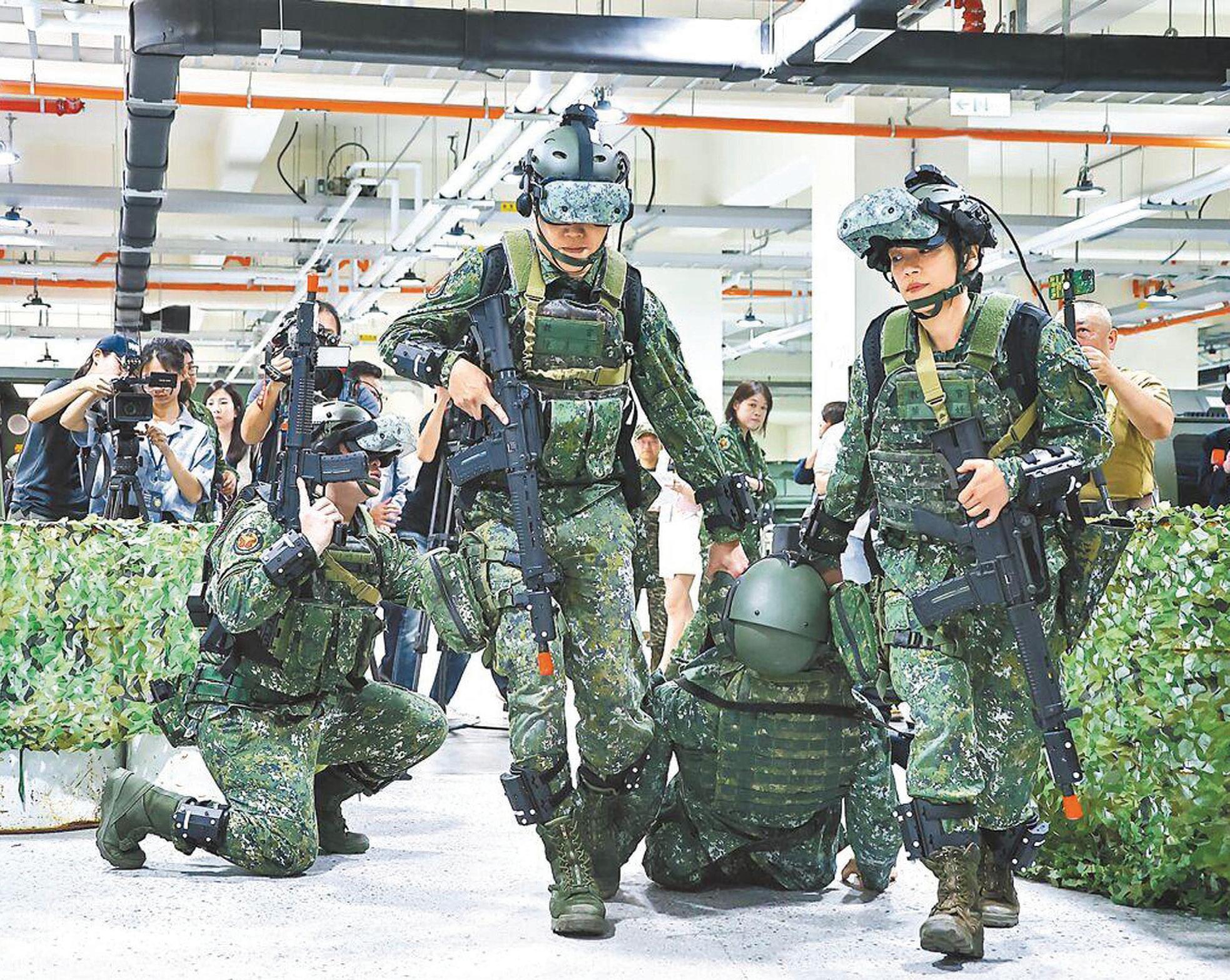
On September 24, 2024, the All-of-Society Resilience Committee focused on five areas: civilian mobilization, energy supply, critical infrastructure maintenance, and more than 300 facility types were reviewed for future exercise planning.
Issue 3: Societal Resilience
I: Cyber Security - Ensuring Basic Telecommunications Services with Support Infrastructure in Transportation and Power Systems
1. Critical Sectors for National Security
National security and resilience depend on the protection and functioning of eight critical sectors. These sectors include government, communication, transportation, energy, science parks, medical systems,ing continuity in leadership, policymaking, and emergency response. Communication systems must maintain secure and reliable channels to enable both civilian and military coordination during crises. The transportation sector is crucial for keeping infrastructure such as roads, railways, ports, and airports functional, ensuring mobility in times of need. The energy sector requires robust protection against sabotage, as disruptions to power generation, distribution, and storage could have widespread consequences. The 2024 formation of the

ing, and turning plans into action, will be leveraged.
Equally important is the protection of science parks, which house key research facilities and technologi-particular attention to banking, stock markets, and digital transactions to defend against cyber threats. Aing geopolitical and technological challenges.
2. Steps for National Security Planning
To establish a resilient national security posture, objectives should address a range of concerns, including cyber defense, emergency response, and the protection of critical infrastructure. A comprehensive national plan must then be developed, integrating international best practices and ensuring coordination across multiple agencies. This plan should be thoroughly evaluated through assessments, simulations, and realsecurity measures and their adaptability in the face of evolving threats.

b) Operational checklists, c) Planning frameworks, and d) Manuals for protection exercises. The sixstep protection framework involves setting objectives, identifying assets, conducting risk assessments,departmental information-sharing mechanisms and business continuity planning as formalized national policy.
3. Critical Information Infrastructure
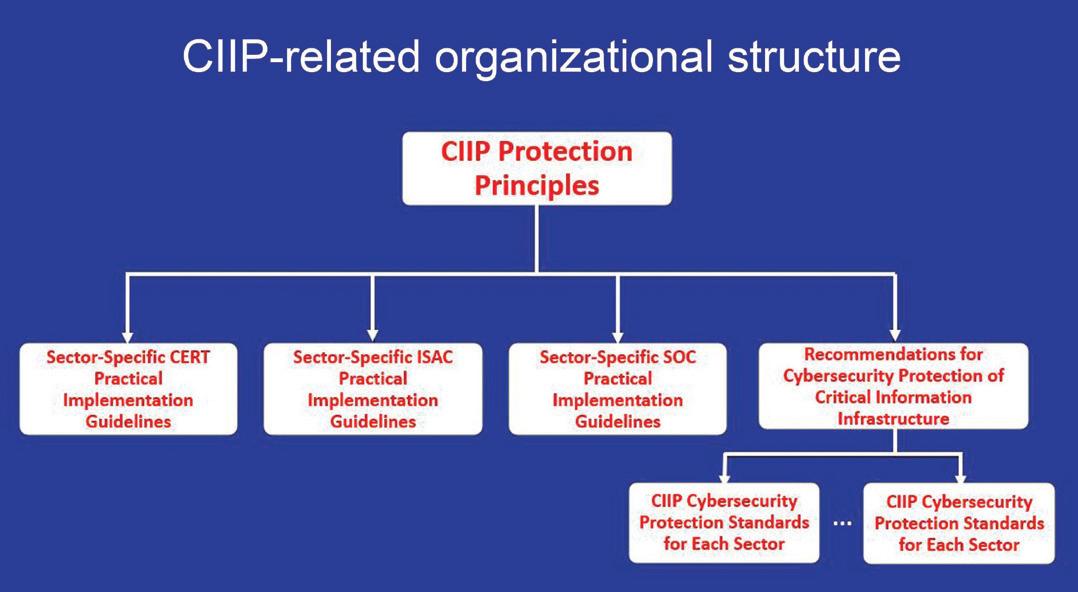
paramount. Industrial Control Systems (ICS), which oversee manufacturing, energy, and utility operations, must be secured to prevent disruption. Energy Management Systems should be protected to ensure the continuity of power distribution in the event of cyber or physical attacks. Similarly, lighting control systems in urban and critical facilities must be safeguarded to prevent manipulation during emergencies. Fire alarm and extinguishing systems are essential to maintaining safety in key buildings, and their functionality must be preserved during crises. Intrusion Detection Systems (IDS) are another critical component, serving to monitor and prevent unauthorized access to networks controlling sensitive infrastructure. Implementing international security protection standards, such as the USA for cybersecurity, can provide a foundational framework for securing these systems. Additionally, routine inventory checks and infrastructure protection exercises are necessary to ensure operational readiness.
Detailed mention should be made of control systems types under CIIP: SCADA, PLC, HMI, IED; Distributed Control Systems (DCS); Elevator control systems; and storage and access control. Foundationaling; and incident response.
4. Cybersecurity Regulation: MODA’s Role -
ing four key categories of institutions. These include public organizations responsible for managing critical functions, state-owned enterprises providing essential services, key infrastructure service providers such as those handling transportation, power, and telecommunications, and government-funded institutions such as research and healthcare entities. These institutions must submit security documentation to -
public organizations; public enterprises; critical Information Infrastructure (CII) service providers; and government-funded entities. However, the current legal framework governing cybersecurity is limited to peacetime and does not adequately address the threat of cyberattacks during wartime. This gap underscores the need for a more comprehensive and adaptable legal and regulatory framework to address emerging security challenges.
5. Taiwan’s Vulnerability to Cyber and Physical Attacks
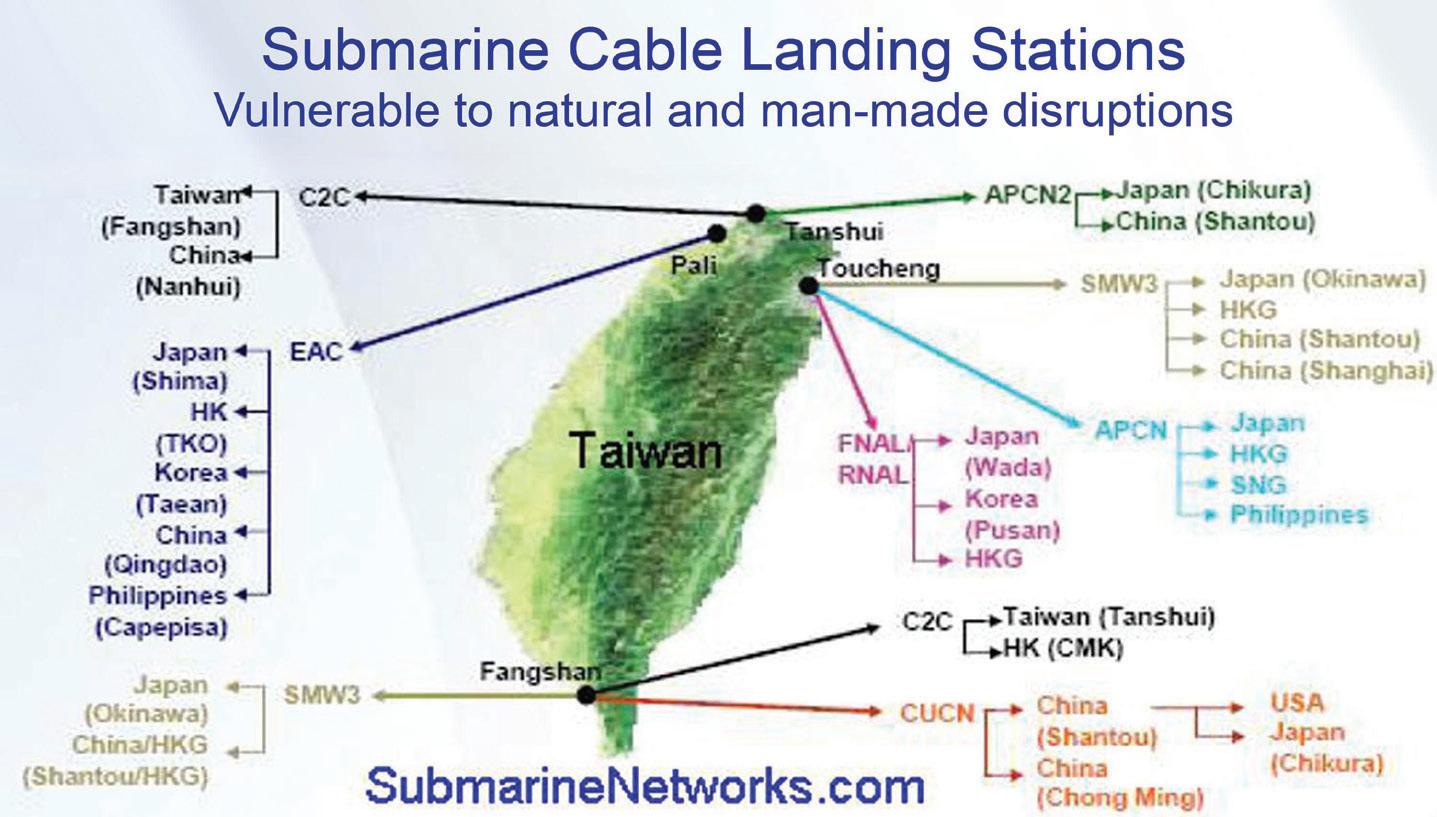
Taiwan’s vulnerability to cyber and physical attacks is highlighted by its reliance on international submarine cables, which are critical for global communication. Taiwan is connected by 14 submarine cables, with seven submarine cable landing stations, including three in the northern region and one in the south, making them potential strategic targets. Disrup-
security. To mitigate this, Taiwan has secured alternative communication options, such as a contract with SES for Medium Earth Orbit (MEO) services, which could provide an additional communication -
satellite backups are tied to economic continuity and industrial competitiveness, not just defense.
be easily disabled, and the concentration of electricity distribution centers in just three locations increases the risk of cascading failures. Moreover, resource scarcity during wartime could further exacerbate
government-owned microwave network, which is critical for agencies involved in emergency response and military operations, is also at risk due to its reliance on heavy antennas and components sourced
communication and surveillance are vulnerable to interference and jamming, limiting their reliability during emergencies.
6. Lessons from Ukraine’s Experience
escalation. Russia’s targeting of all civilian sectors, including government agencies, telecommunications, and energy infrastructure, underscores the broad scope of threats that could emerge in a crisis. Additionally, the fatigue caused by constant air raid warnings has diminished public responsiveness to alerts, highlighting the importance strategies. Emergency medical care shortages, inadequate shelter provisions, and limited medical infrastructure have further strained Ukraine’s resilience, providing a stark warning for Taiwan.
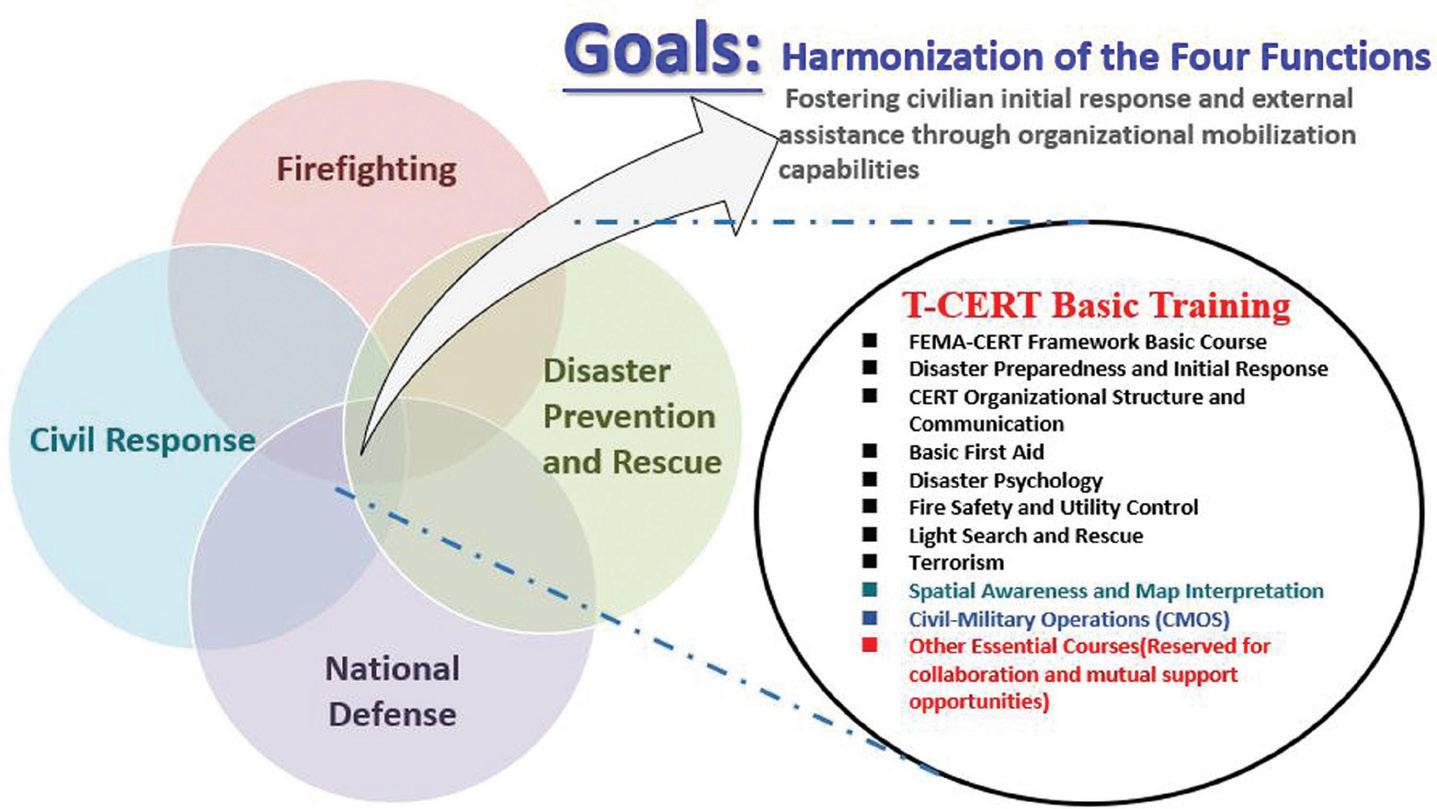
as the regulations governing these sectors apply only in peacetime. Furthermore, government research processes than on practical, technical solutions. Another structural vulnerability is the high-rise telecom satellite comms are useful but highly vulnerable to jamming. Despite references from U.S. experts to the by partners as lagging behind expectations, even with the 2024–2029 T-CERT rollout.
II: Combat Casualty Care Capacity and Resilience
1. Healthcare as a Component of National Resilience
Healthcare resilience is a critical aspect of national defense, ensuring that both civilian and military populations have access to necessary medical care, particularly during times of crisis. Disruptions to the healthcare system can sigand resistance, as the ability to receive essential medical treatment is fundamental to maintaining public health and stability. In times of war or national emergency,

a resilient healthcare system becomes a linchpin for the nation’s overall resilience, contributing not only to physical health but also to the psychological strength of the population.
2. Historical Lessons in Medical Preparedness
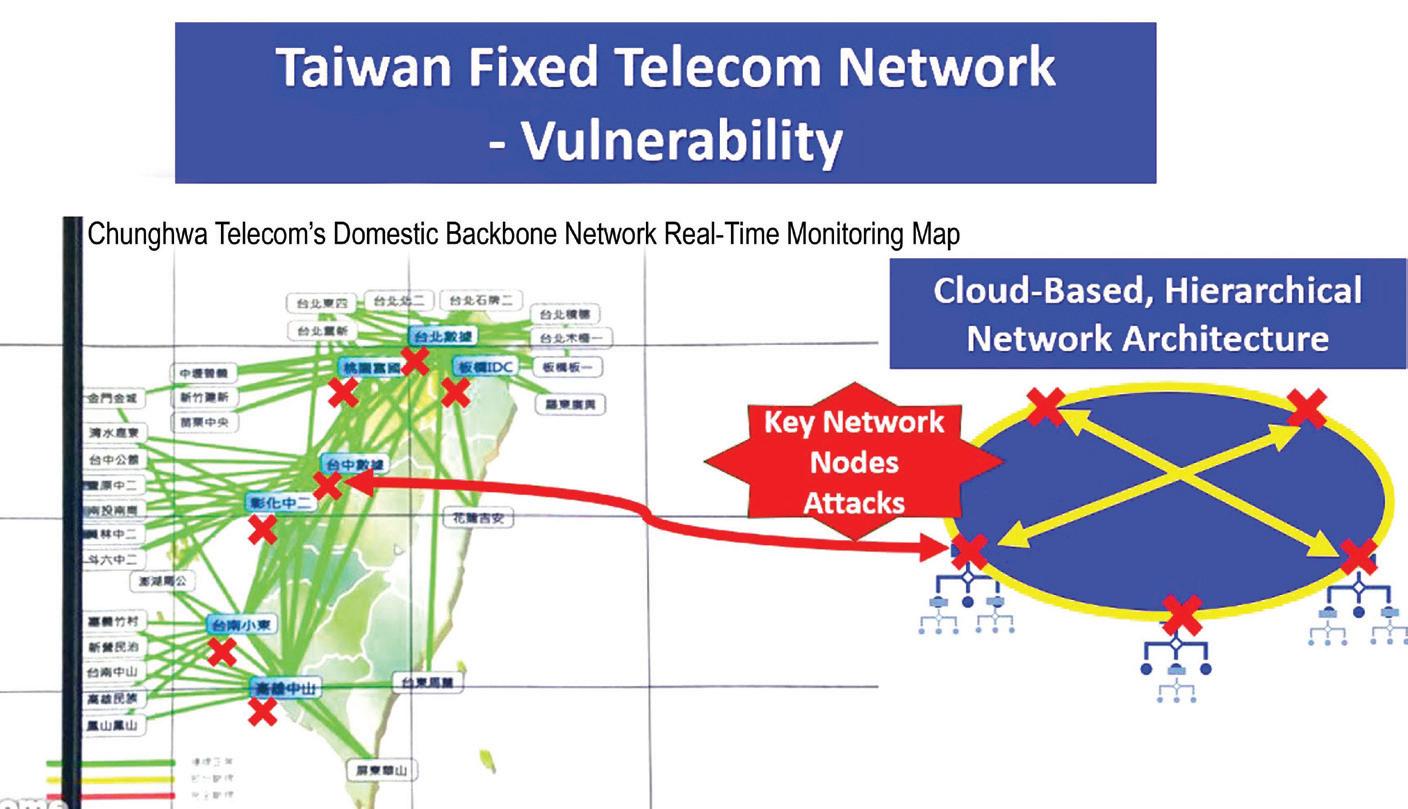
History provides valuable lessons on the importance of medical preparedness warfare can have on healthcare systems, highlighting the necessity for robust and adaptable medical medical facilities became crucial for maintaining healthcare services amid constant bombardment. The more recent times, the Defense of Kyiv (2022) emphasized the importance of underground hospitals, -
3. Challenges for Taiwan’s Healthcare System
Taiwan’s healthcare system faces several challenges that could undermine its resilience during a crisis. One of the most critical issues is the dependence on imported medical supplies, particularly pharmaceuticals sourced from China. This reliance creates a strategic vulnerability, as disruptions in supply chains could lead to shortages, especially for elderly and chronically ill patients medications. Additionally, Taiwan’s centralized healthcare system, with most hospitals concentrated in six metropolitan areas, makes it vulnerable to targeted attacks. In the event of large-scale casualties, the existing trauma care capacity may
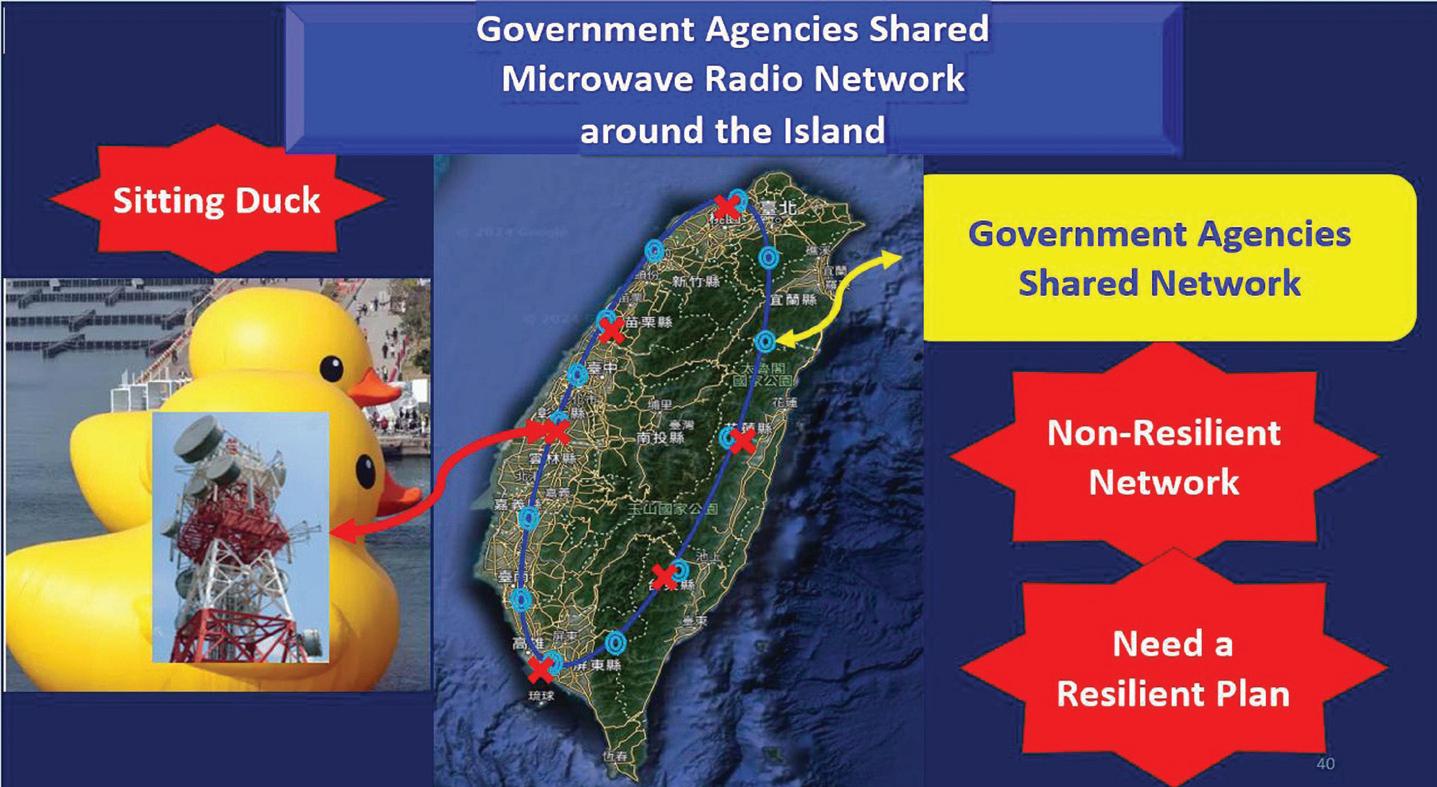
as digital infrastructure could be compromised during a cyberattack or physical disruption.
4.
Key Risks

Several key risks could threaten Taiwan’s healthcare system during times of crisis. These include direct damage to hospitals and medical supply facilities, which could severely disrupt medical care. Additionally, disruptions to power and water supplies could affect the functionality of critical medical operations. The breakdown of emergency response and communication systems would further hinder the personnel, as many medical professionals may be called to serve in the military or face other wartime challenges.
Enhancing National Resilience: Strategies for War and Disasters
To enhance national resilience, Taiwan can adopt several strategic measures. One of the key approaches is to develop a DNA strategy—focused on Distribution, Networking, and Adaptation. This would involve decentralizing the deployment of medical hubs to reduce dependence on major hospitals, which resource allocation, even in decentralized systems. Additionally, adaptive response mechanisms would
Another crucial strategy is the prioritization of telecommunications. Restoring telecom services should be a top priority after an attack, as ensuring operational emergency communication is essential for coordinating healthcare services and facilitating public safety measures. Alongside this, there are grassroots civilian-led initiatives, such as self-defense and medical training programs, which can supplement govrange of biological threats, whether natural or man-made.dent threat analysis, inter-agency coordination, emergency plan implementation, cross-domain platform development, and joint command mechanisms.
Issue 4: Industrial Resilience
Scenario Responses:
I. Taiwan
Analysts believe that the Trump administration’s approach to Taiwan’s semiconductor industry is likelytential strategy, is seen as a drastic measure that could harm the industry’s long-term stability and competitiveness. Despite these challenges, Taiwan remains open to the possibility of Intel regaining some of
In terms of Taiwan’s future in semiconductor manufacturing, Taiwan highlights the growing competition from China, which is rapidly developing its semiconductor capabilities. However, there is agreement that China is still far from matching TSMC’s well-established ecosystem, and this gap is unlikely
TSMC will relocate some operations to the US, they suggest that given the stability of US operations and the increasing incentives, TSMC may gradually shift some focus to the US for expansion, particularly in light of the challenges Taiwan faces. However, it was emphasized that any major shift would likely occur incrementally rather than abruptly, with the shift focusing more on expanding existing operations rather than a wholesale relocation of R&D or production.
II. CCP
The CCP believes that a full decoupling between the US and China is unlikely, as it would harm Trump’s semiconductors, where the US lacks alternatives. Instead, they predict the US will continue shifting supply chains to countries like Vietnam and Mexico while strengthening ties with TSMC for nearshoring. Atries more quickly. Taiwan’s private sector is expected to adapt to these changes, though the Taiwaneselittle impact on Taiwan, as the private sector has shown resilience in adapting without much government support.
In the most likely scenario, Trump will work to improve his domestic image by de-escalating tensions, Taiwan’s machinery industries, especially if the US becomes a major supplier to China. Ultimately, the more balanced approach in US-China relations.
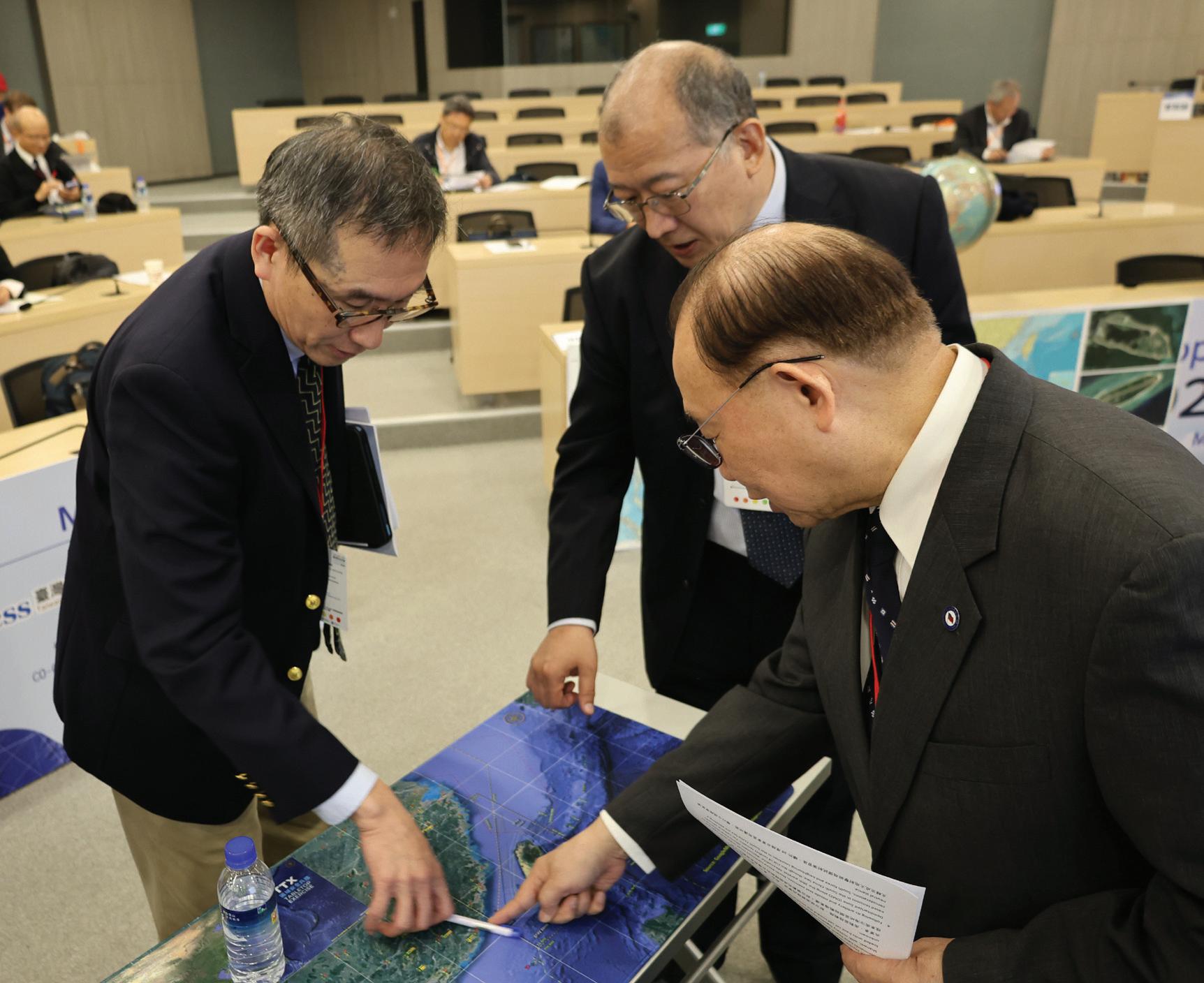
Issue 5: Economic Stability, Financial Resilience & National Security Strategy
Scenario Responses:
I. Prime Minister Chen Chi-chung: Strategic Framing and the Broader Geoeconomic Landscapenance, trade, technology, energy, food security, and military dynamics. Drawing on classical strategic China remains low. Instead, he highlighted that economic competition and power asymmetries—particdigital central bank currencies.
II. Enhancing Societal Resilience and Economic Self-Reliance
The need to strengthen societal resilience against external shocks was emphasized. Comprehensive measures to reduce Taiwan’s economic vulnerability to geopolitical disruptions were proposed, includdays of coal and oil. They also recommended stockpiling critical materials such as semiconductors and chemical compounds, establishing emergency distribution systems for daily necessities, and developing contingency plans for large-scale infrastructure failures.
ity, including currency depreciation and stock market volatility, was a key concern. They called for theland. Ultimately, they underscored the need to inform and prepare the public, arguing that communication is as important as strategy in preventing societal collapse during crises.
III. Financial Infrastructure and Crisis Management
Crisis Task Force and outlined immediate measures such as central bank interventions, emergency liquidity provision, and foreign exchange controls to stabilize the Taiwan dollar and prevent large-scale
Medium- and long-term strategies included reinforcing banking resilience, managing corporate debt, and developing alternative payment infrastructures—particularly those relying on satellite communication for redundancy. There was advocacy for a dual-currency settlement mechanism and called for -
tantly, they stressed cybersecurity as a national priority, recommending a Financial Cyber Emergency Response Team, real-time disinformation monitoring, and public-private partnerships to boost investor
IV. Systems Thinking in National Security Strategy
structures to include horizontal integration across agencies and domains. The importance of submarine cables, communications infrastructure, and information availability during crises was stressed. National security must be rooted in preserving democratic values and constitutional governance, and not merely economic costs, and advocated for a comprehensive and sustainable security framework to avoid a descent into chaos.
V. Legal Infrastructure and Government Legitimacy
Experts addressed the legal dimensions of emergency governance, arguing that Taiwan lacks a robust legal infrastructure to deal with issues of legitimacy, legality, and emergency powers. They warned that societal skepticism toward national security measures—due to historical abuses under martial law— poses a serious challenge. In this view, Taiwan must clarify the chain of command and maintain essential functions even if civil norms need to be temporarily suspended. Drawing from experience overseeing emergency exercises in 2009 and 2010, they noted that institutional unpreparedness remains a critical
VI. Social Cohesion and Strategic Messaging
praised as a peaceful, democratic, and prosperous society, and it is important to maintain that identity. Conscription is supported, not so much as a preparation for war, but as a means to foster civic engage-
economic dependence on China, and for Taiwan’s image to be projected internationally as a resilient and democratic society. The session concluded with a call to bolster Taiwan’s demographic and intellectual capital, describing Taiwan’s universities and students as its greatest strategic asset.
VII. Strategic Integration and Next Steps
The session concluded by returning to the central question: how can Taiwan construct a comprehensive national strategy in anticipation of geopolitical and economic disruption under a potential Trump 2.0 administration? They emphasized the need for policy integration across defense, economic, legal, and diplomatic domains. Taiwan must move beyond ad hoc responses and instead develop a cohesive, forward-looking strategy capable of withstanding compound crises.
Issue 6: Energy Stability
Scenario Responses:
I. Introduction
ant on Taipower and limited by geographical constraints. Industrial areas are particularly vulnerablestabilize supply and integrate alternative energy sources.
tary exercises around Taiwan in 2029, targeting LNG and coal transport vessels under the pretense of maritime inspections.
Taiwan’s electricity reserve margin is projected to fall to just 0.4% by summer 2025, indicating a severe heightening energy system instability.
II. Key Issues in Taiwan’s Energy Grid
Taiwan’s power grid is increasingly vulnerable due to its geographic limitations, with energy infraparticularly at risk. A redesign to allow bidirectional energy transfer would improve resilience, integrate renewable energy, and help stabilize the grid during peak demand.

NVIDIA’s request for 10tricity placed new pressure on Taiwan’s energy supply. The government’s claim of delivering 55 bilwidespread skepticism.
The NT$564.5 billion Power Grid Resilience Enhancement Plan (2025–2034) was launched, with President Lai ordering early completion of critical
Questions remain over Taipower’s solvency amid escalating costs.
III. Nuclear Energy and Strategic Considerations
Scholars advocated for extending the licenses of Taiwan’s nuclear plants, particularly the third plant, which requires urgent dry storage facilities for spent fuel. As global interest in nuclear energy grows, Taiwan should consider repurposing its existing plants as strategic backup facilities, especially as its military relies on Taipower for energy. Extending nuclear plant operations would strengthen Taiwan’s energy security. The government established three criteria for reconsidering nuclear policy: safety, waste management, and societal and Taiwanese academics have urged reevaluation, noting shortfalls in capacity.
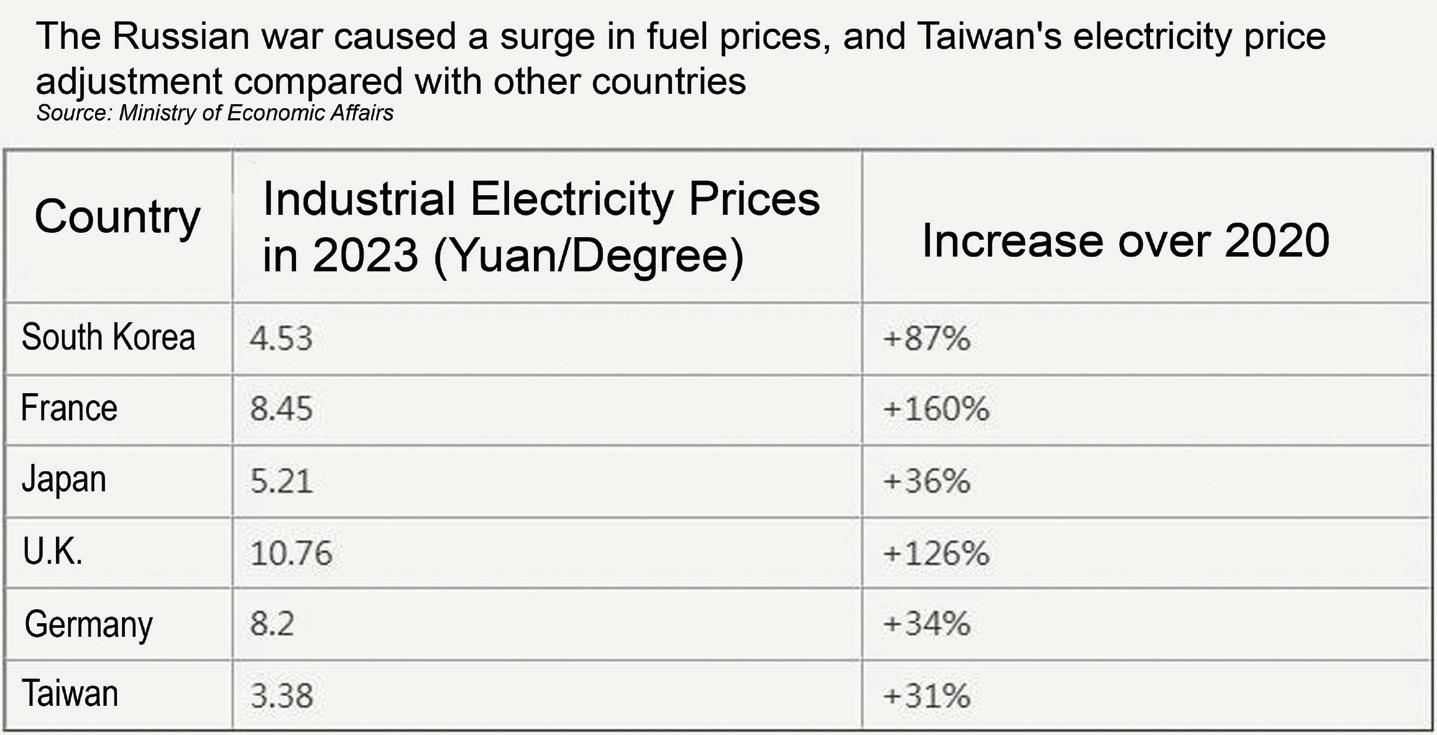
in the non-nuclear transition. This trend reinforces the argument for extending the operational life of existing nuclear plants.
IV. Energy Demand and Denuclearization Challenges
Taiwan’s current energy consumption exceeds the available supply under its denuclearization plan, raising energy costs and increasing blackout risks. Transitioning from nuclear power requires improvements
electric vehicles to temporarily feed energy back into the grid
Forecasts indicate that spinning reserve margins could turn negative by 2026, forcing continued reliance on coal and decommissioned fossil fuel units to prevent grid collapse.
V. Short-Term Solutions for Energy Security
Short-term energy solutions include improving energy storage, diversifying energy sources, and invest-
ized energy systems could reduce grid dependency, though government support is crucial for success.
ability of the non-nuclear policy.
VI. Policy and Security Considerations
Taiwan needs clearer nuclear energy policies to prevent delays in critical decisions about plant extensions, as international trends show increased interest in nuclear energy. Delays could lead to energy shortages. However, extending nuclear operations introduces security risks, particularly with the rising geopolitical tensions surrounding Taiwan.
The 2022–2024 period exposed vulnerabilities through multiple blackouts, including those caused by under presidential directive. of decommissioned plants into reserve facilities for wartime readiness.
VII. Balancing Energy Security and Decarbonization
(CCS) technology is costly, Taiwan may still need a baseline of thermal power plants for grid stability. investments in plant upgrades to extend their operational life.
The March 2025 TTX concluded that Taiwan’s energy risk index could hit 0.99 by 2029, signaling an
shore or international disposal as long-term options. pricing, demand-side management, and smart grid technologies to improve resilience and transparency.
VIII. National Security Alert System Demo
Through the design of a scenario featuring escalating PRC grey-zone coercion and strategic blockade operations, this exercise assessed the national consequences of disruptions to Taiwan’s energy supply. These simulated disruptions were triggered by military threats, with direct impacts on the nation’s electricity infrastructure.
In the supporting scenario, multiple LNG carriers en route from the Middle East through the South China Sea were intercepted by PRC Coast Guard vessels and diverted. These ships were prevented from unloading in Taiwan, causing a 10-day energy supply disruption. The PLA subsequently launched drone attacks on Taiwan’s three UHV transmission hubs—Longtan, Zhongliao, and Longci—crippling national grid performance. These events were used to evaluate risk-level increases in Taiwan’s Energy Security Index, a key metric in the national security alert system.
IX. Conclusion
Taiwan’s island geography and limited natural resources make it almost entirely dependent on imported fossil fuels. Even peacetime challenges—such as typhoons—can disrupt supply chains, let alone wartime. In a military confrontation, PRC forces would likely target Taiwan’s energy infrastructure to erode societal resilience and public morale.
Despite policy commitments to expand renewables, increase natural gas use, reduce coal, and eliminate nuclear power, Taiwan has missed renewable energy targets for eight consecutive years. Gas infrastructure projects have stalled, and power plant procurement has lagged behind. These issues have destabilized Taiwan’s energy outlook.
In 2025, the Legislative Yuan cut subsidies to Taipower, forcing the company to raise rates by over 6%. -
matic energy policy is essential to protect national security and economic stability.
V. Recommendations
wan Center for Security Studies, the following section outlines actionable and thematic recommendations across all six subject areas covered in the exercise. These recommendations are aimed at enhancing Taiwan’s resilience, preparedness, and response capacity in the face of escalating hostilities and gray-zone tactics from China.
Recommendations
1. Regional Security and the Taiwan Strait Crisis
Enhance C4ISR and Joint Deterrence Mechanisms:
Taiwan must strengthen its Command, Control, Communications, Computers, Intelligence, Surveillance, and Reconnaissance (C4ISR) systems. These should be deeply integrated with those of ad hoc.
Establish Legal Countermeasures to PRC Narratives:
international law. This includes building international coalitions to reinforce the application of UNCLOS and ICAO standards in the Taiwan Strait and resisting the PRC’s framing of cross-strait
Given the PRC’s united front strategies targeting Kinmen and Matsu, Taiwan must reinforce civil resilience and governance structures in these regions. Communit y engagement, public diplomacy,
Prepare Legal and Strategic Frameworks for Blockade Scenarios:
Taiwan should build a legal architecture to proactively frame any future PRC blockade as a violation of international law. International arbitration, early diplomatic engagement, and third-party mediation (e.g., ASEAN or the UN) should be prepared in advance.
Diversify Regional Defense Cooperation:
ASEAN nations, India, and Australia. These should include contingency planning for humanitarian evacuations and coordinated responses to maritime disruptions.
Harden Maritime Supply Lines:
and invest in anti-blockade naval assets including unmanned surface vehicles (USVs), civilian cargo escort protocols, and port redundancy planning.
3. Societal Resilience (Cybersecurity and Healthcare)
Cybersecurity: Implement Wartime-Ready Regulatory Reforms:
to include wartime cyber threats. Legal frameworks should cover critical infrastructure operators (CIOs) under both peacetime and crisis conditions.
Establish Redundant Communication Infrastructure:
Given the vulnerability of undersea cables, Taiwan should accelerate investments in satellite internet capacity (e.g., MEO and LEO constellations) and enhance microwave and radio-based backup networks to ensure command continuity.
Healthcare Resilience: Decentralize and Mobilize Medical Networks:
Promote Grassroots Emergency Training:
The government should formally integrate and fund civilian-led medical response and self-defense training initiatives. These can be rapidly scaled and localized to improve whole-of-society preparedness.
4. Industrial Resilience and Semiconductor Security
Strengthen Taiwan’s Role as Innovation Hub, Not Just Manufacturer: Taiwan should deepen investment in R&D and IP generation in semiconductors to anchor upstream and downstream value within its borders. This includes enhancing design and packaging capabilities under the Foundry 2.0 strategy.
Protect Strategic Assets from Coercive Diplomacy:
izing government involvement in negotiations over overseas investments—especially in the U.S.—
Addressing electricity, water, and human capital shortages should be a top industrial security priorindustrial zones with prioritized energy access, and ensuring stable utilities.
5. Economic Stability, Financial Resilience, and National Security Strategy
Create a National Economic Security Council:
council would be responsible for drafting multi-scenario economic resilience plans, akin to the Financial Crisis Task Force proposed during the exercise.
Institutionalize a Dual-Currency Settlement System:ment and test a dual-currency digital payment architecture, including satellite-supported digital transaction networks.
Improve Crisis Governance Legitimacy:
Taiwan must clarify emergency legal frameworks to ensure continuity of democratic governance. Laws governing martial law, emergency powers, and the role of civilian oversight should be re-
Enhance Strategic Messaging for Civic Unity:
Investment in national education campaigns, civil defense culture, and universal conscription (with civic education components) can foster social cohesion. Universities and youth outreach should play a pivotal role in reinforcing a resilient democratic identity.
6. Energy Stability
Delay or Reassess the Nuclear Phase-Out:
Given projected shortfalls, Taiwan should legally provision for reactivating existing nuclear plants
dry fuel storage capacity and licensing.
Diversify and Decentralize Energy Sources:
Investments should be made in LNG infrastructure, but Taiwan must also fast-track research and adoption of Small Modular Reactors (SMRs), Vehicle-to-Grid (V2G) technology, and Carbon Capture and Storage (CCS). These should be paired with redundancy in critical energy hubs for defense and industrial facilities.
Secure Maritime Energy Lifelines: France, should support the development of maritime resupply defense doctrines.
tional security and resilience strategy. This strategy must be:
Accountable (democratically governed and transparent)
Adaptable (modular and scalable in wartime)
Taiwan should not treat its defense posture as solely a militar y issue. Rather, national resilience must integrate economic stability, industrial integrity, healthcare readiness, energy continuity, cy-
Taiwan can proactively counter the PRC’s multifaceted pressure campaigns and preserve its sovereignty in the face of escalating threats.

The photo depicts a scene from the “All-People Defense Mobilization and Disaster Relief Exercise (Min-An No. 8),” showing a first responder rushing to the scene to treat an injured victim.
VI. Conclusion
The 2025 Tabletop Exercise (TTX), hosted by the Taiwan Center for Security Studies (TCSS) and supported by the Institute of International Relations at National Chengchi University, represented the most comprehensive and multi-dimensional simulation to date aimed at confronting the vast array of security, economic, and societal threats posed by intensifying pressure from the People’s Republic of China (PRC). Their purpose was to collaboratively probe and evaluate Taiwan’s national preparedness in the
one that recognizes that sovereignty is not defended through military means alone. The exercise demonstrated how threats now span multiple domains, including economic coercion, cyber warfare, energy
growing need for Taiwan to shift from siloed planning toward a comprehensive whole-of-nation strategy for resilience and deterrence.
Event Structure and Purposecouraged thinking strategically across seven major dimensions of Taiwan’s national security: regional energy stability, and governance legitimacy. Each scenario was grounded in a 2029 geopolitical projection shaped by the potential return of a Trump administration in the United States and the PRC’s international volatility and persistent strategic ambiguity.
isolation, but rather on their real-world viability, democratic integrity, and capacity to adjust to unfolding crisis dynamics. This methodology contributed to a balanced and integrated approach to national security—one that foregrounds sustainability, democratic values, and institutional learning.
Summary of Key Scenarios and Findings
1. Regional Security and the Taiwan Strait Crisis
exercises with Russia, large-scale missile tests, and the incursion of aircraft carrier strike groups into Taiwan’s proximity. This scenario highlighted China’s ability to combine gray-zone coercion with psychological and legal warfare—leveraging ambiguity and civilian-military integration to avoid outright
Taiwan must move beyond a passive stance of monitoring and condemnation. Instead, Taiwan should double down on strengthening real-time C4ISR systems, deepen intelligence sharing with democratic
Importantly, the simulation underscored the need to internationalize Taiwan’s crisis through strategic
2.
Scenario two envisioned the PRC implementing a month-long blockade around Taiwan following the non-aggressive intentions, its actions were designed to strangle Taiwan’s economy, fracture international support, and force political concessions without war.
The TTX revealed that Taiwan’s ability to respond in such scenarios is hampered by limited legal framenational legal strategy, proactive engagement with ASEAN and India, and operational readiness to secure maritime supply chains were emphasized. Taiwan must not wait for allied intervention but should prepare for strategic self-help, supported by prepositioned reserves and clear thresholds for international appeal.
3. Societal Resilience (Cybersecurity and Healthcare)vulnerable power nodes, and the risk posed by its dependence on submarine cables. A call for a wartimeready digital regulatory regime, supported by international cybersecurity standards, was made.
A report on healthcare resilience highlighted Taiwan’s dependence on imported pharmaceuticals, the concentration of medical resources in urban centers, and an overall lack of preparedness for mass-casualternative that emphasized decentralization, logistical redundancy, and localized medical autonomy. integrated into national resilience planning.
4. Industrial Resilience and Semiconductor Strategy
Taiwan’s role as a semiconductor powerhouse—centered on TSMC—was at the heart of this scenario, especially in light of protectionist pressures from a second Trump administration. The exercise explored term competitiveness.
The scenario revealed Taiwan’s strategic gap: it had allowed foreign powers to dictate terms in the techwan risks becoming a mere service hub unless it asserts control over industrial policy, talent retention, energy provision, and upstream R&D. The proposed Foundry 2.0 strategy and the Chip-based Industrial Innovation Strategy (CbI 2024–2033) were seen as vital blueprints—so long as they are supported by statecraft, not just market forces.
5. Economic Stability, Financial Resilience, and National Security Strategy -
national security-centric economic framework was highlighted.
Key takeaways included the urgent need for a Financial Crisis Task Force and a Financial Cyber Emergency Response Team. Establishing dual-currency settlement mechanisms, emergency liquidity protocols, and international credit partnerships were seen as essential tools. At the strategic level, speakers strategy.
The link between civic morale and resilience was emphasized. Conscription, education reform, and transparent strategic messaging were seen as tools not only of defense but of identity formation in a time of existential challenge.
6. Energy Security and Power Grid Resilience
shortfall exacerbated by Taiwan’s nuclear phase-out, inadequate renewable capacity, and vulnerability
Taiwan faces an immediate crisis.
The simulation showed that Taiwan’s energy transition had proceeded too quickly and without enough the reactivation or extension of nuclear plants under regulatory clarity. LNG infrastructure was seen as a supported by expedited regulatory reform and stable investment.
Most critically, it was stressed that energy security is national security. Defense and semiconductor production cannot operate without reliable power. Ensuring resilient and protected supply chains for fuel imports, alongside domestic power storage and generation, must be treated as a top-tier strategic priority.
Overarching Lessons Learned
1. Taiwan’s Defense Must Be Whole-of-Nation, Not Just Whole-of-Government
Across all scenarios, a consistent theme emerged: Taiwan’s current siloed approach to defense planningchitecture, industrial policy, energy infrastructure, and civil society networks. These elements cannot be treated as peripheral—they are foundational.
2. Legal Preparedness Is a Strategic Blind Spot
Taiwan currently lacks a robust legal framework to govern emergency scenarios—whether blockades, cyberattacks, or internal disruptions. This threatens not only operational readiness but also government legitimacy. Transparent laws governing martial law, emergency powers, and crisis communications must be developed and tested before they are needed.
3. Strategic Communication and National Identity Are Part of Deterrence
The PRC’s gray-zone tactics depend heavily on narrative control. Taiwan must therefore treat strategic messaging, youth education, and civil morale as deterrents in their own right. Information resilience,
4. International Partnerships Remain Key—but Must Be Supplemented by Self-Reliance
facturing capacity, or diplomatic coalitions of the willing, Taiwan must be prepared to act independently when necessary.
5. Institutional Foresight and Scenario Planning Are Now Strategic Imperatives
This TTX demonstrated the value of scenario-based planning and intersectoral dialogue. Moving forward, Taiwan should institutionalize such exercises—at both the government and civil society levels— to ensure national preparedness is not reactive, but anticipatory.
Conclusion and Path Forward
The 2025 TTX underscored the complexity of modern national defense in an era of hybrid warfare, techevidence, expertise, and collaborative inquiry—toward a more secure and sovereign Taiwan. The most important outcome is perhaps psychological: Taiwan must believe it can shape events, not merely react to them. Through integrated planning, institutional resilience, and democratic unity, Taiwan can confront the most severe threats of the 21st century—not only as a bastion of regional stability, but as a global model of adaptable and accountable security governance.
Taiwan must continue, and it must begin with a single principle—resilience is everyone’s responsibility.
